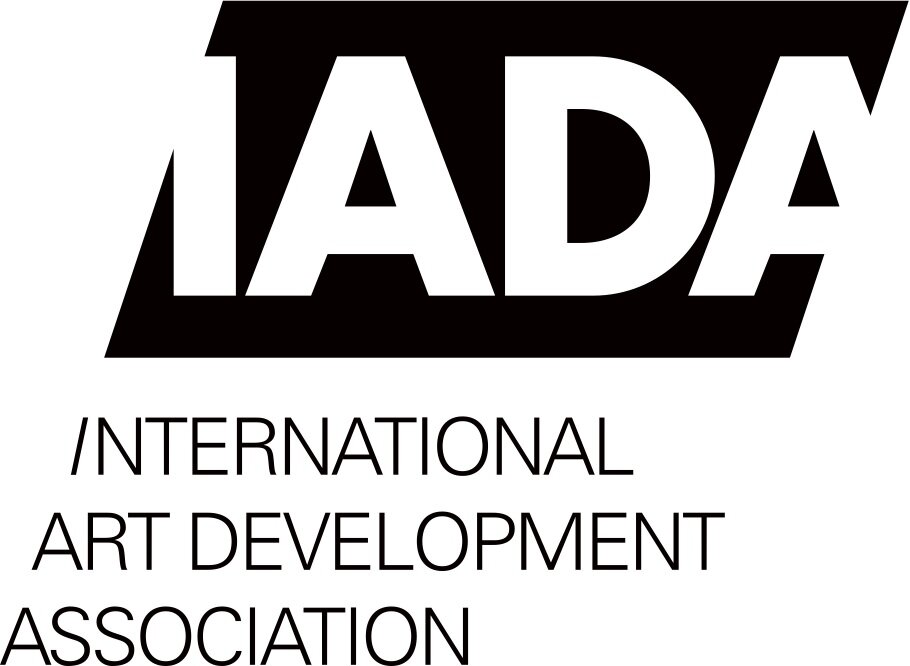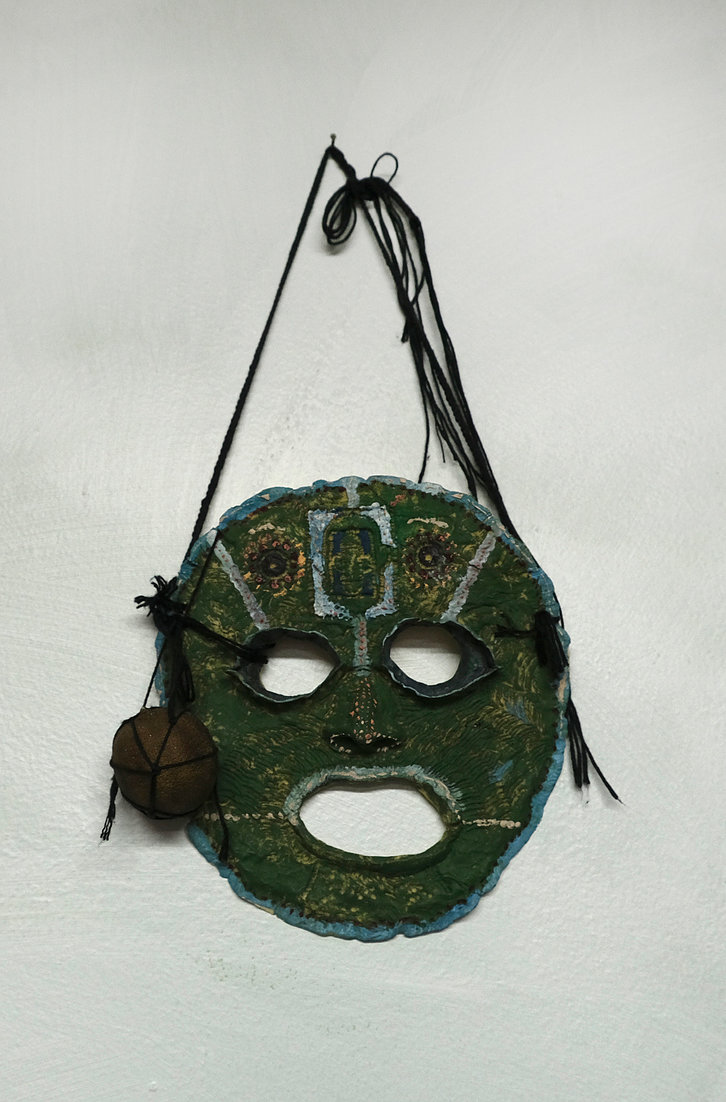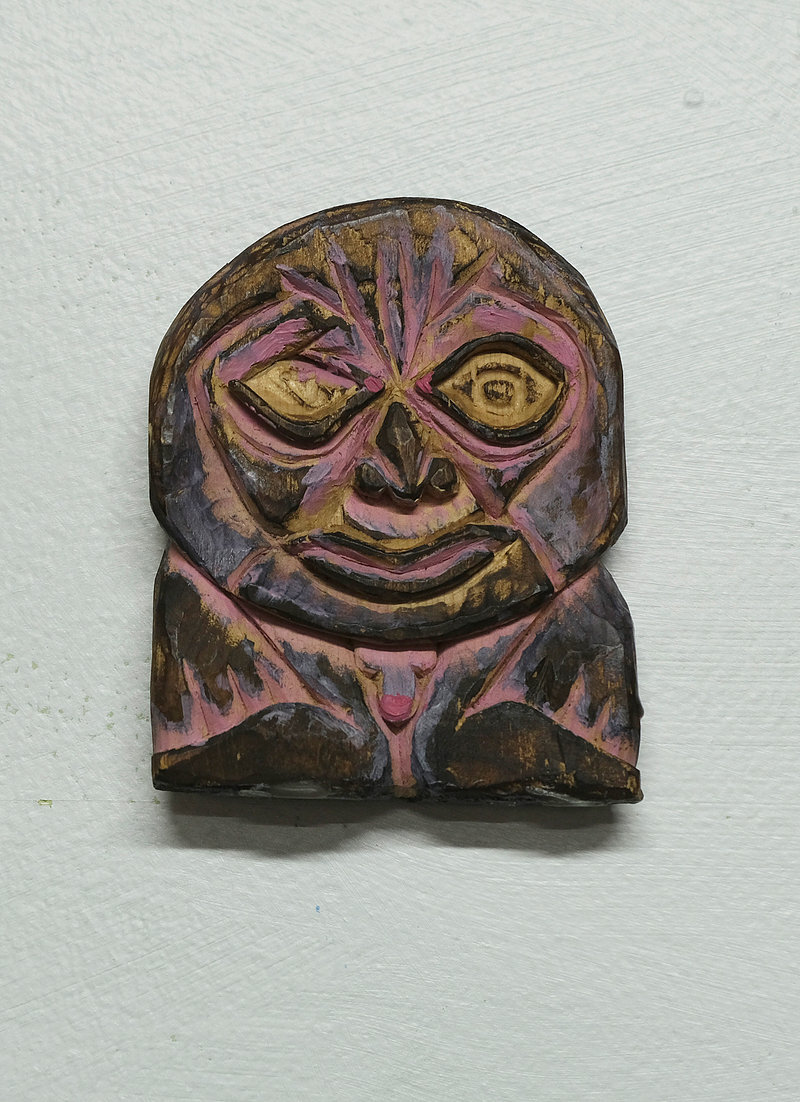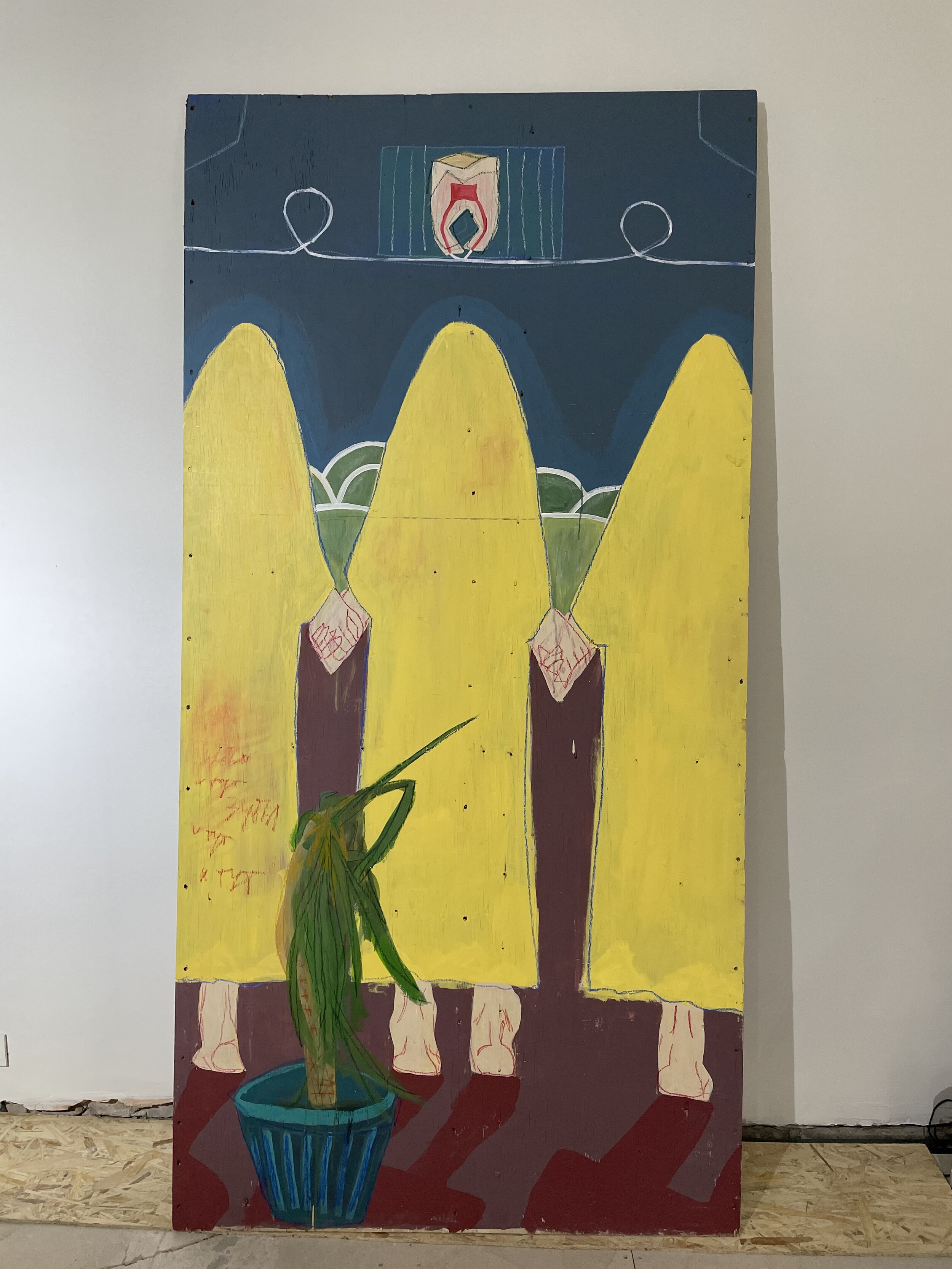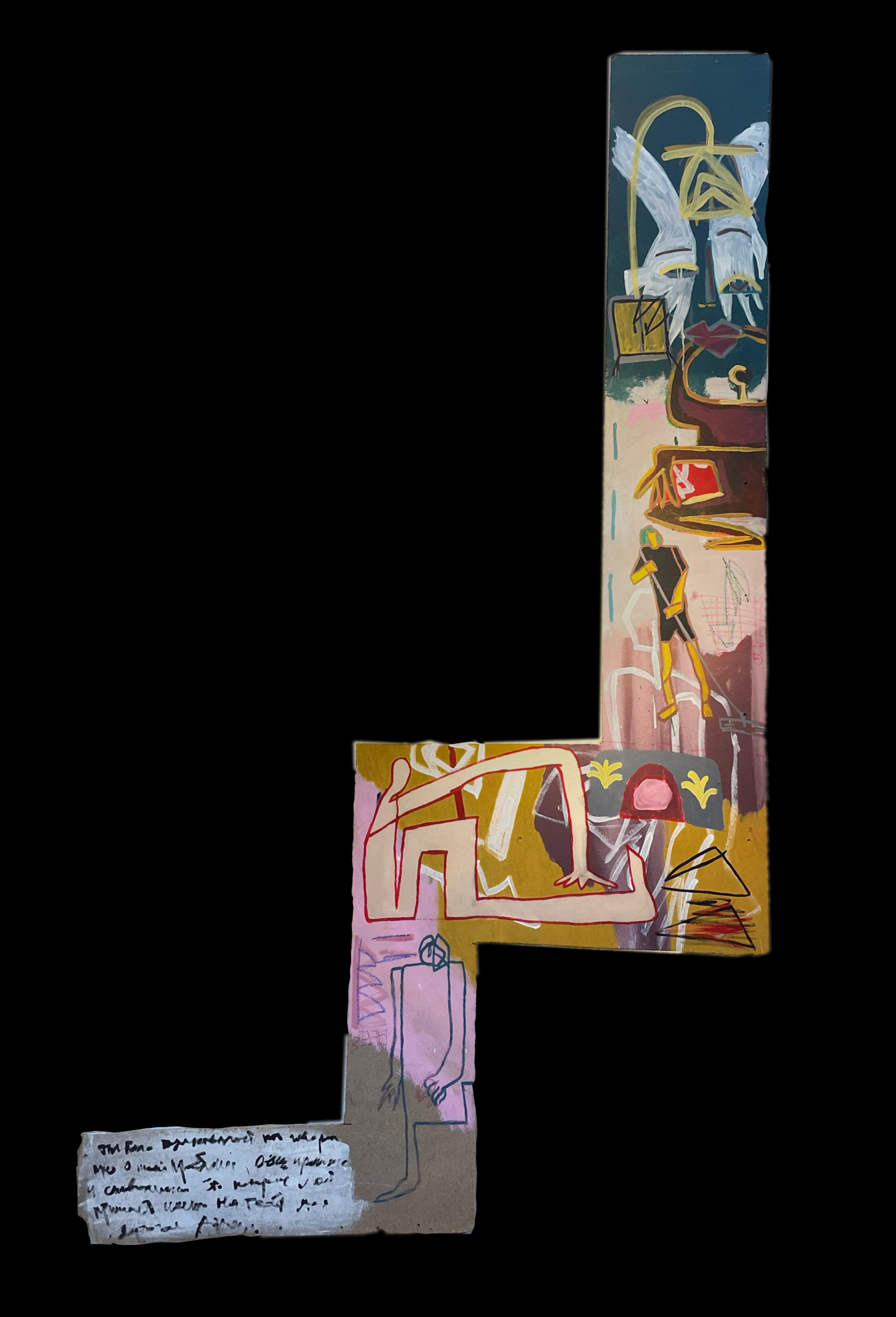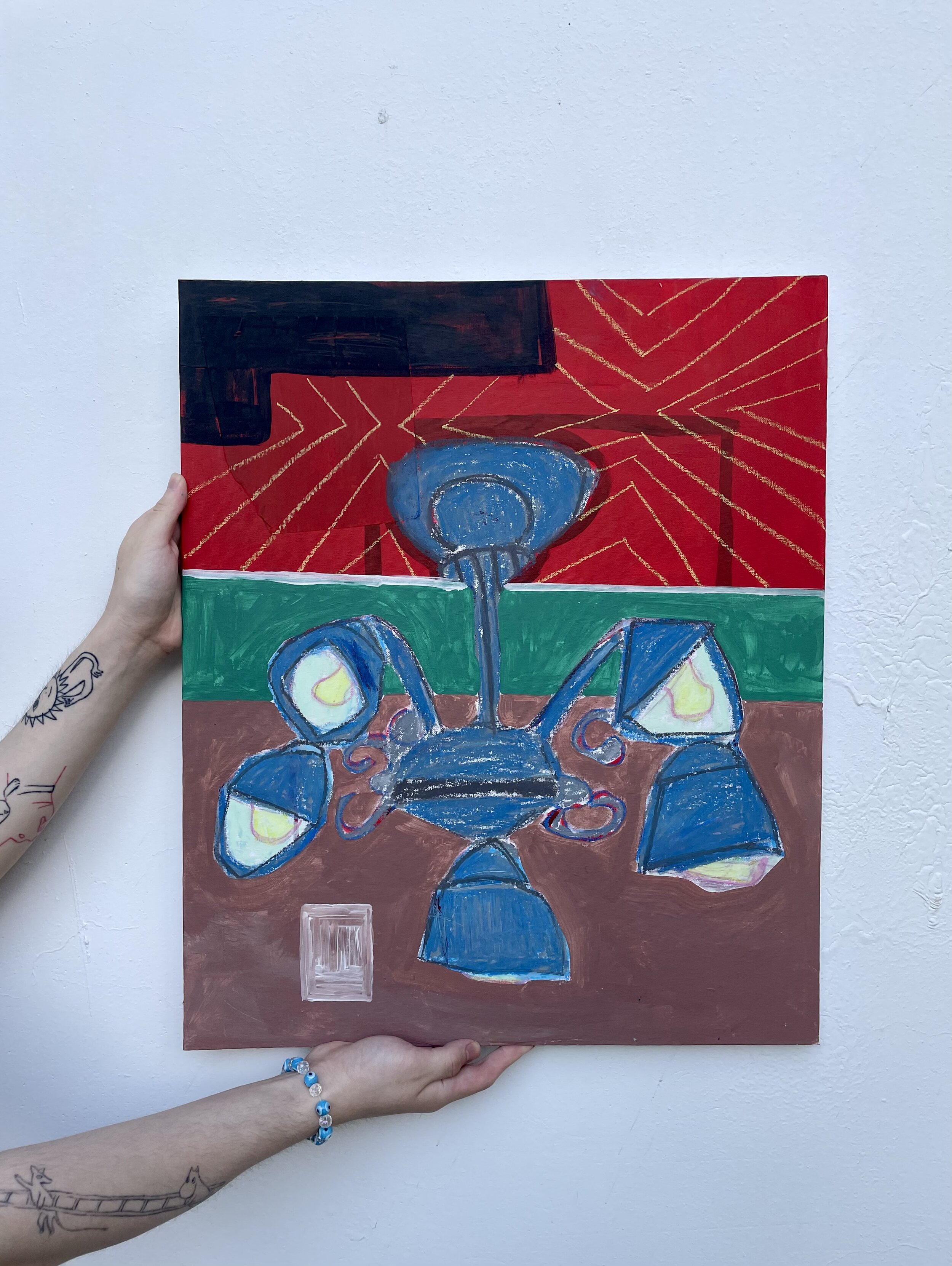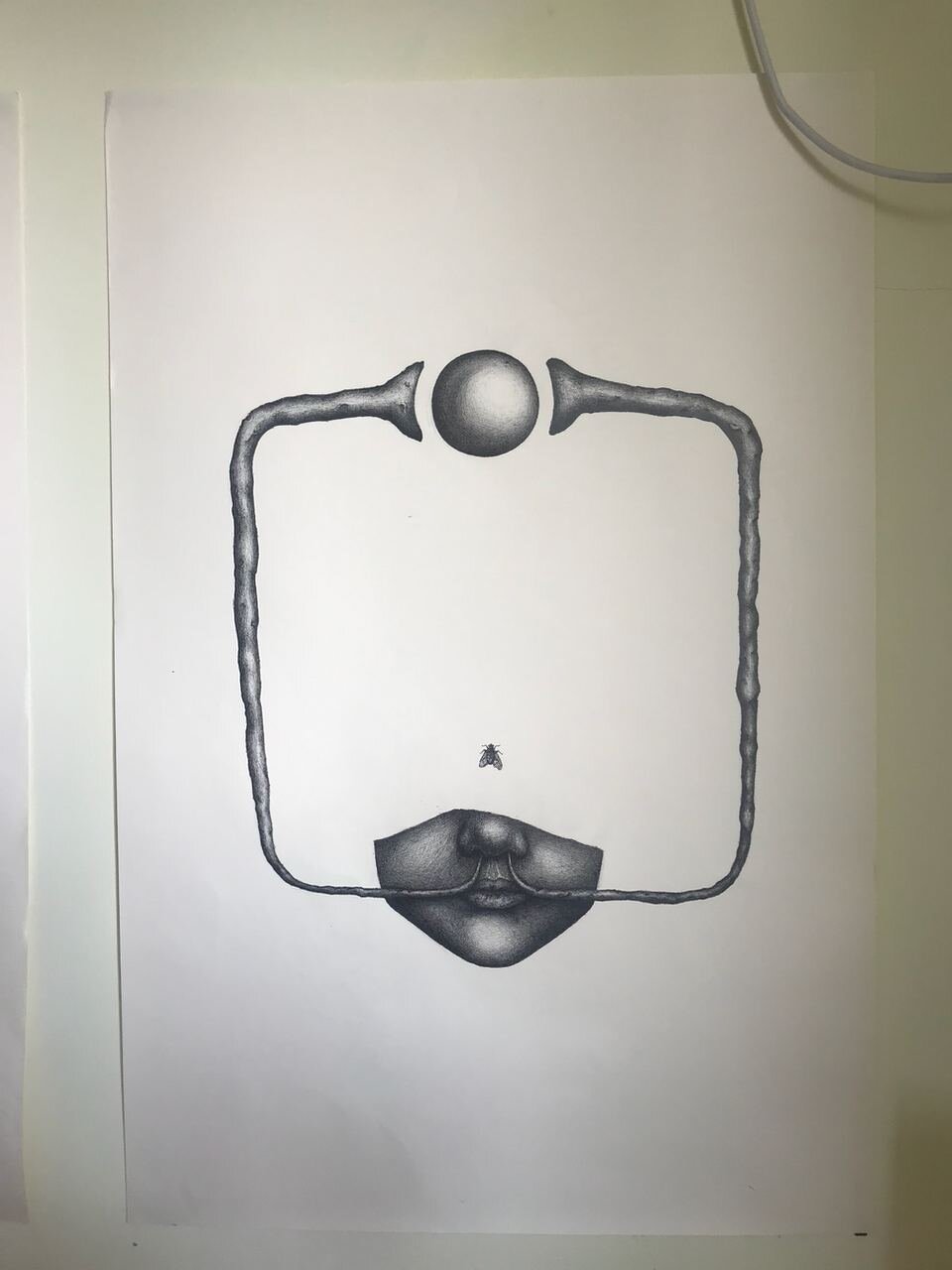Postconceptual turn: the next artist's generation in Kazakhstan
In 2021, Kazakhstan celebrates its 30th anniversary of Independence. Together with the fall of the USSR, tectonic shifts on the geopolitical map also released the seething energy of informal art. A new beginning in the country's modern history served as a catalyst for artistic processes. In the 90s, the first generation of contemporary art was faced with the task of finding a new language of breaking the connection with the Soviet art tradition. During that period, many new artistic practices appeared in Kazakhstan: performance, video art, installations, and much more. The central theme of that time was the search for identity; artists try to articulate their art, an important role is played by political position and agenda criticizing the discourse of power. The second-generation - peers of independence, a scene of young artists formed along with the processes of nation-building and the rapid development of the Internet and new technologies. This article will examine the practice of Kazakhstani young artists characterizing a new turn in local art from logocentric and politically engaged art to the unconscious and aesthetic experience.
Ambujerba
Takhir Yakhyarov performs under the name Ambujerba and works in an expressive manner, often referring to personal experiences and memories from childhood, as emphasizes the artist himself, carried out in a special atmosphere of Almaty micro districts of the late 90s. An infantile world filled with psychedelic images and imaginary rituals, reminiscent of cult objects of a non-existent tribe, inviting the viewer to enter the game, and return to the state of a childhood filled with a sincere gaze and magical perception of reality. Tahir rejects direct communication and articulated concepts. His works elude verbal interpretations, instead, Ambujerba proposes a new empathic mode of art perception.
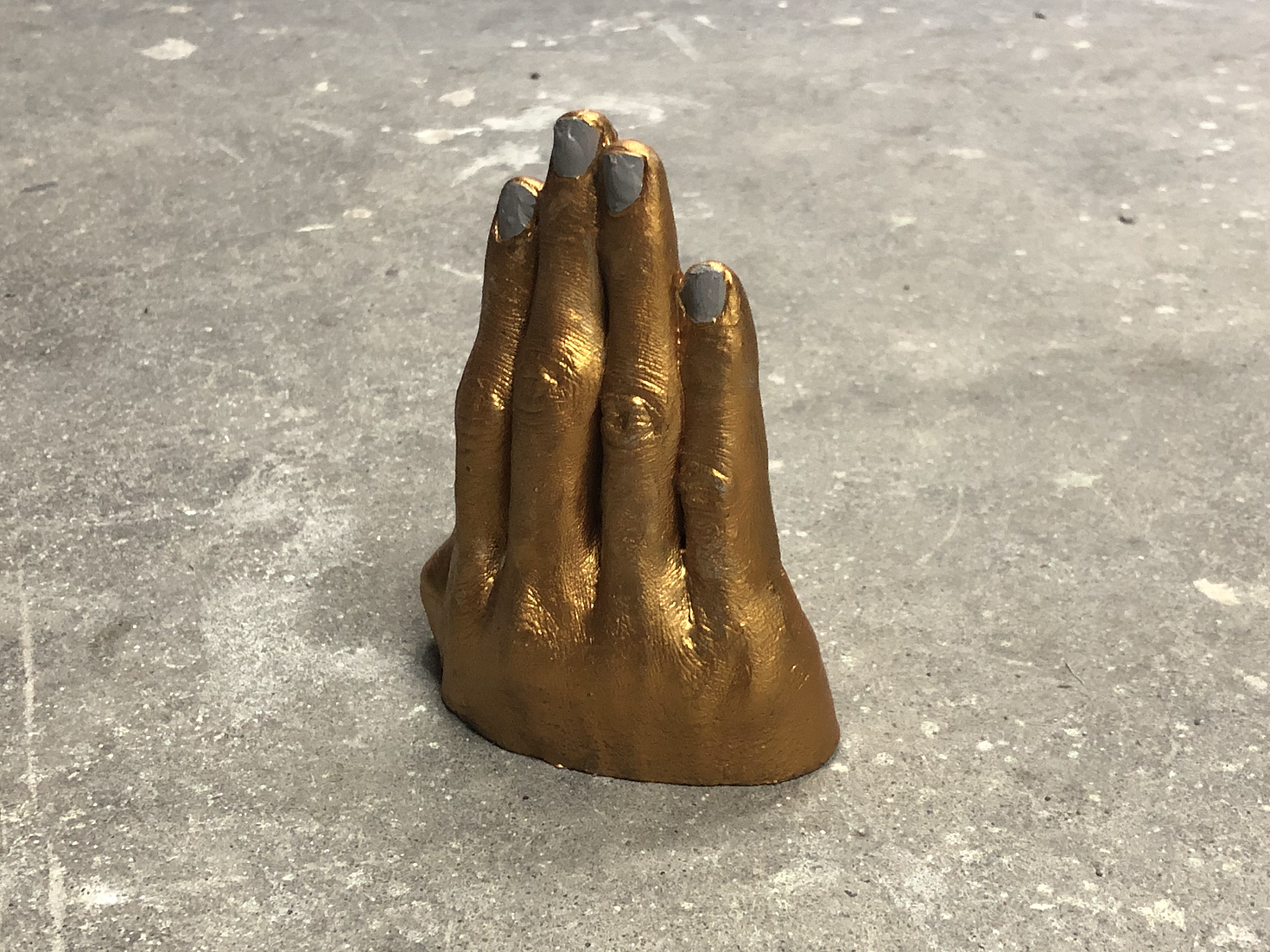
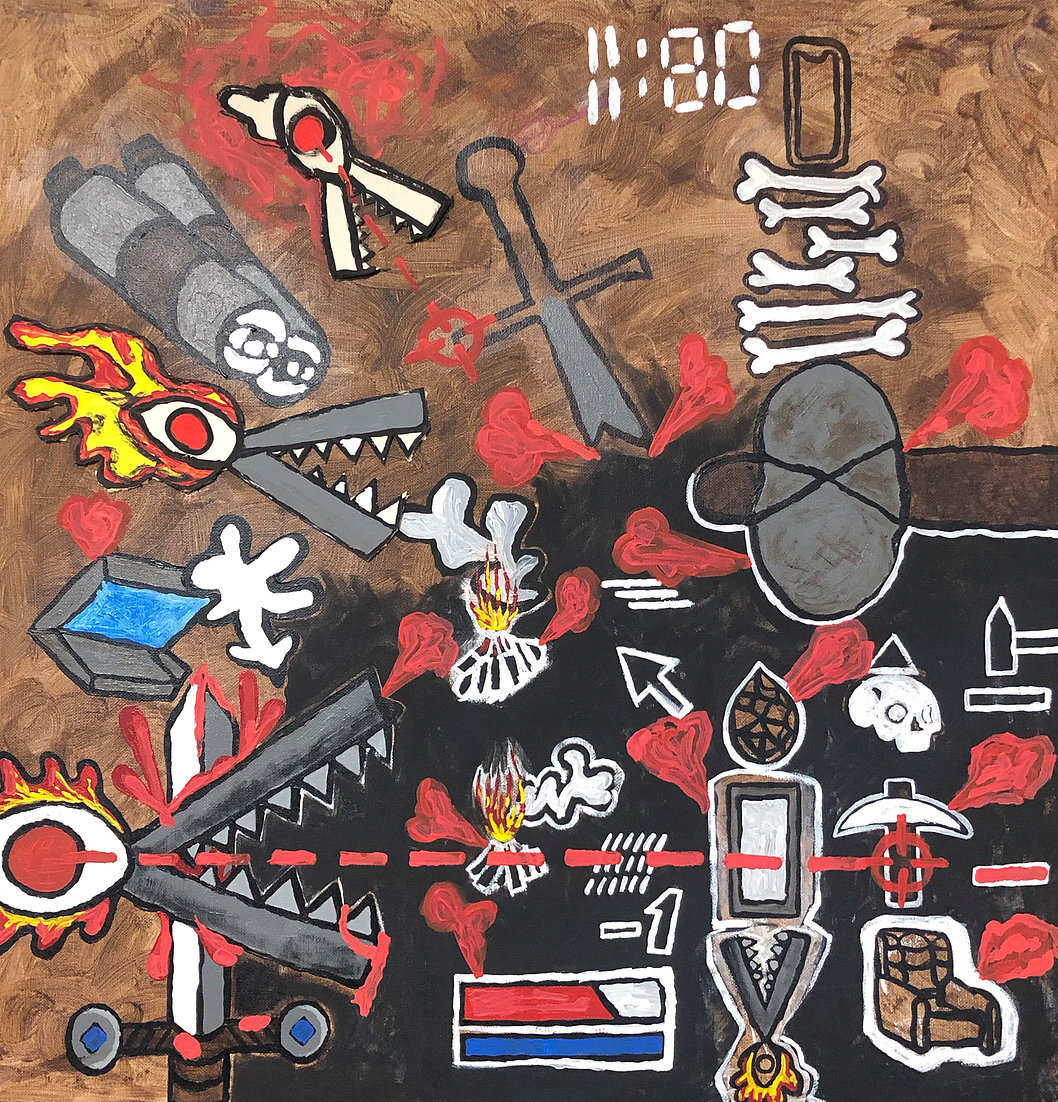

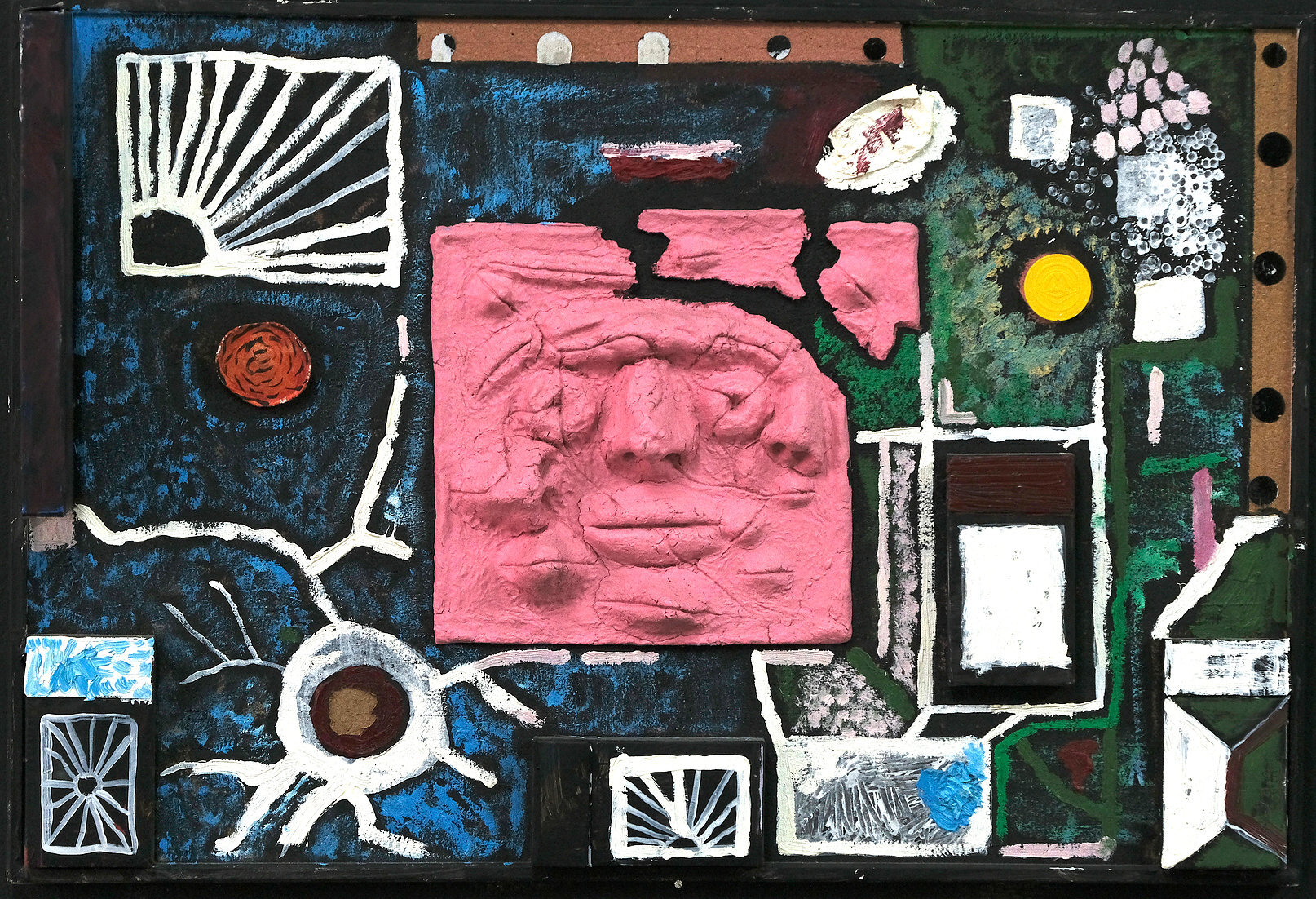
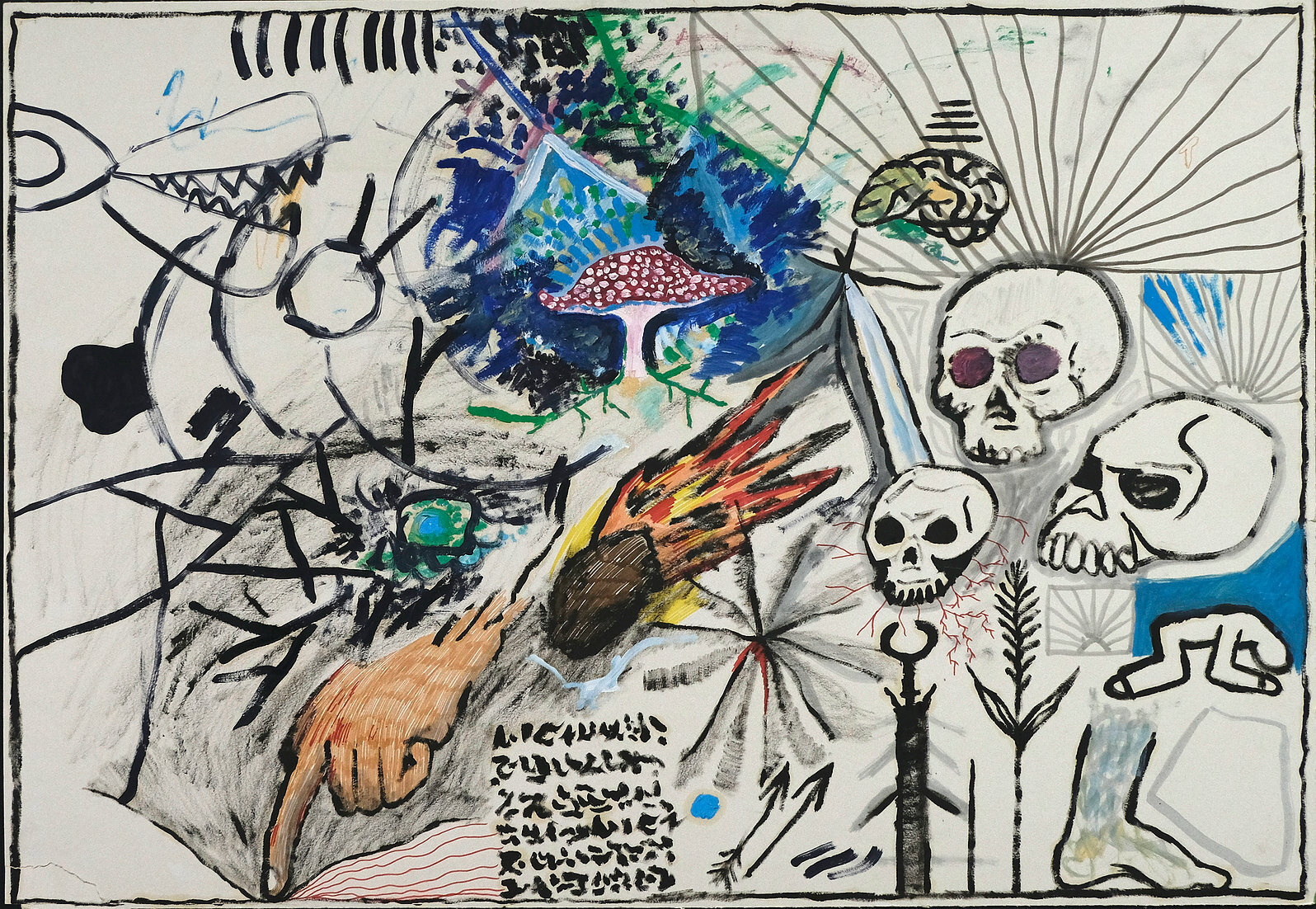
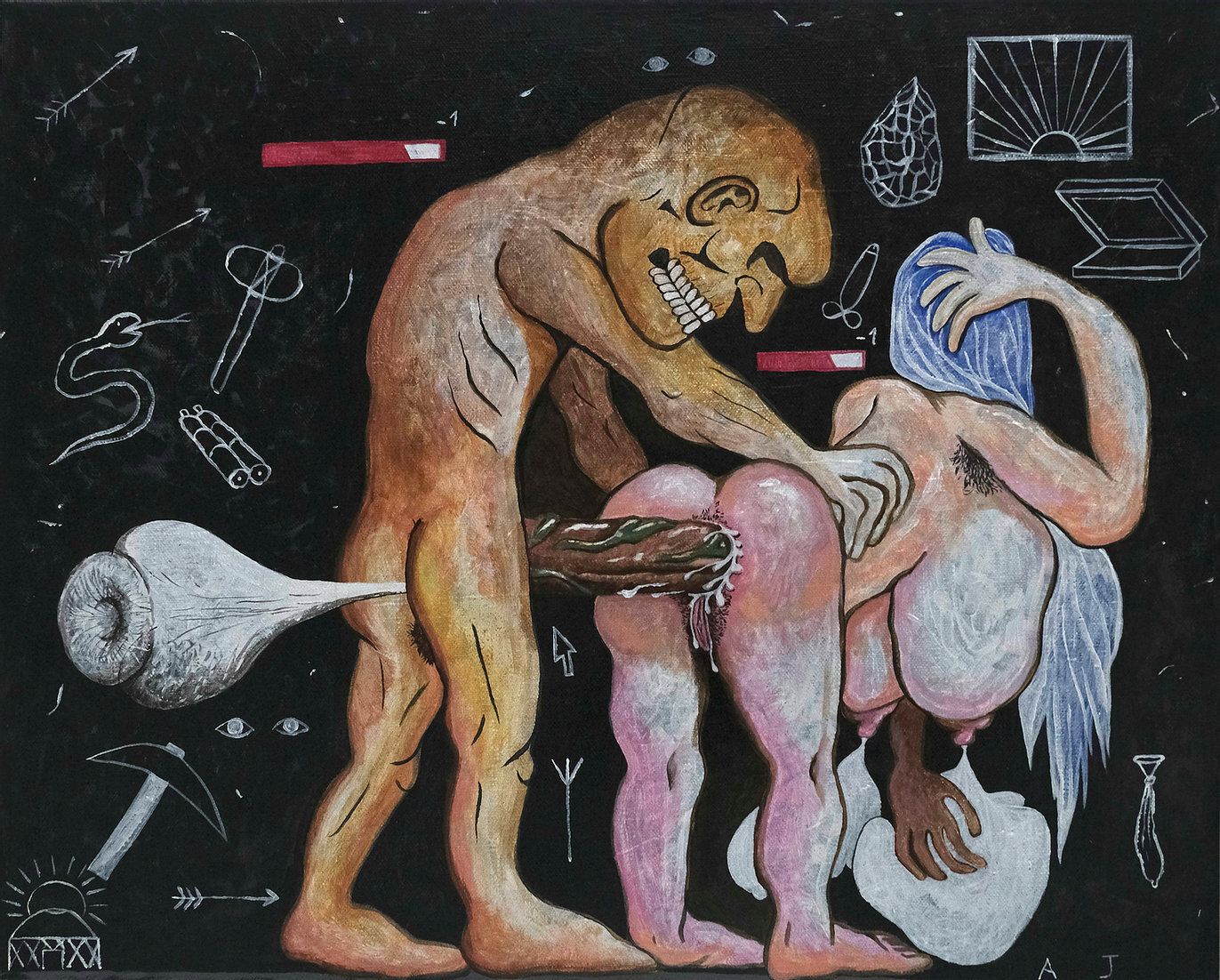
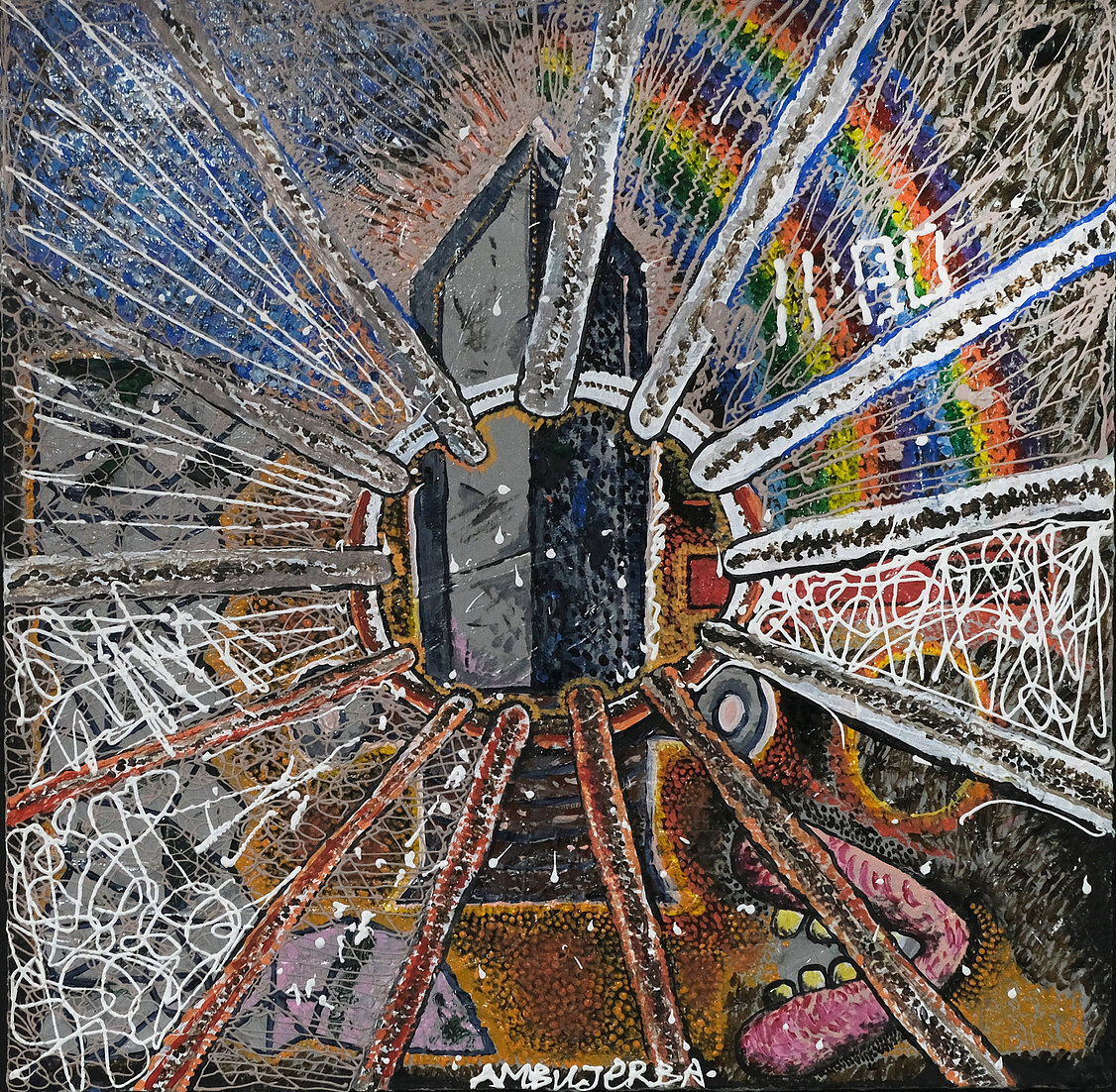
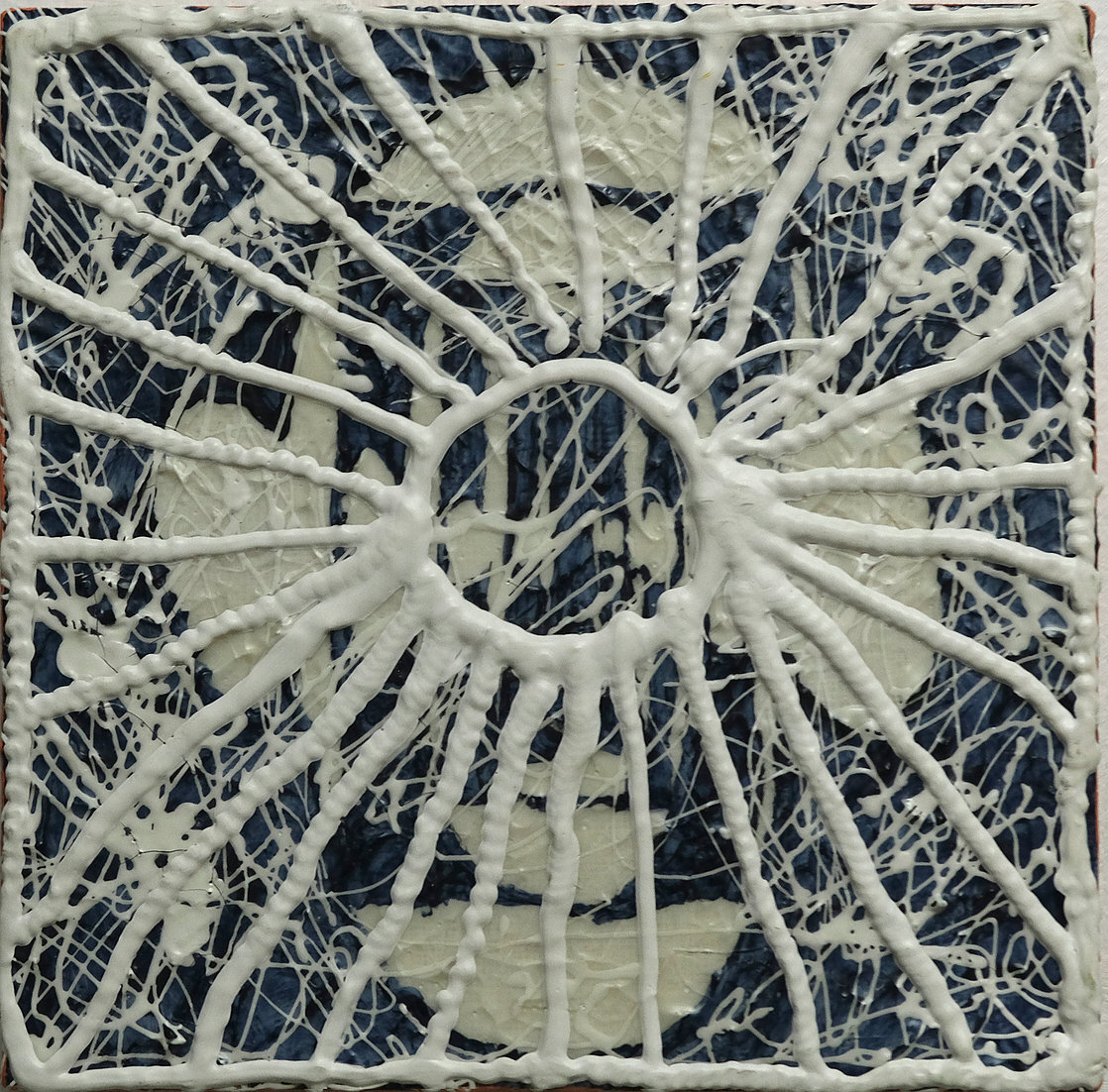
Yelaman Muktarkhan
Sincerity is also becoming an important concept for the young artist Yelaman, who deliberately avoids the claim to the depth of the concept, presenting in his works instead often paradoxical images from everyday life. Yelaman offers a different logic, close to Deleuze's theses stated in the book "The Logic of Sense", where the meaning always remains on the surface without hiding in theoretical depth. At last breaking, the link with the local academic school of painting, in which the ideological pathos took root, which changed the plots from socialist realism to romanticizing the history of nomads, Yelaman's painting is watching the living process of searching for a new language, where the main things become the color and form, excluding meaning for the sake of the experiment. For example, in one of the paintings, we see a large tooth that resembles an image from medical manuals, hiding nothing but the ordinary event of a wisdom tooth removal. In other works Yelaman depicts his dog, draws images of chandeliers seen at home parties, the canvas space is often reduced here to a page from a notebook, registering an autobiographical story, filled with simplicity and banality of the unhurried life of a young artist.
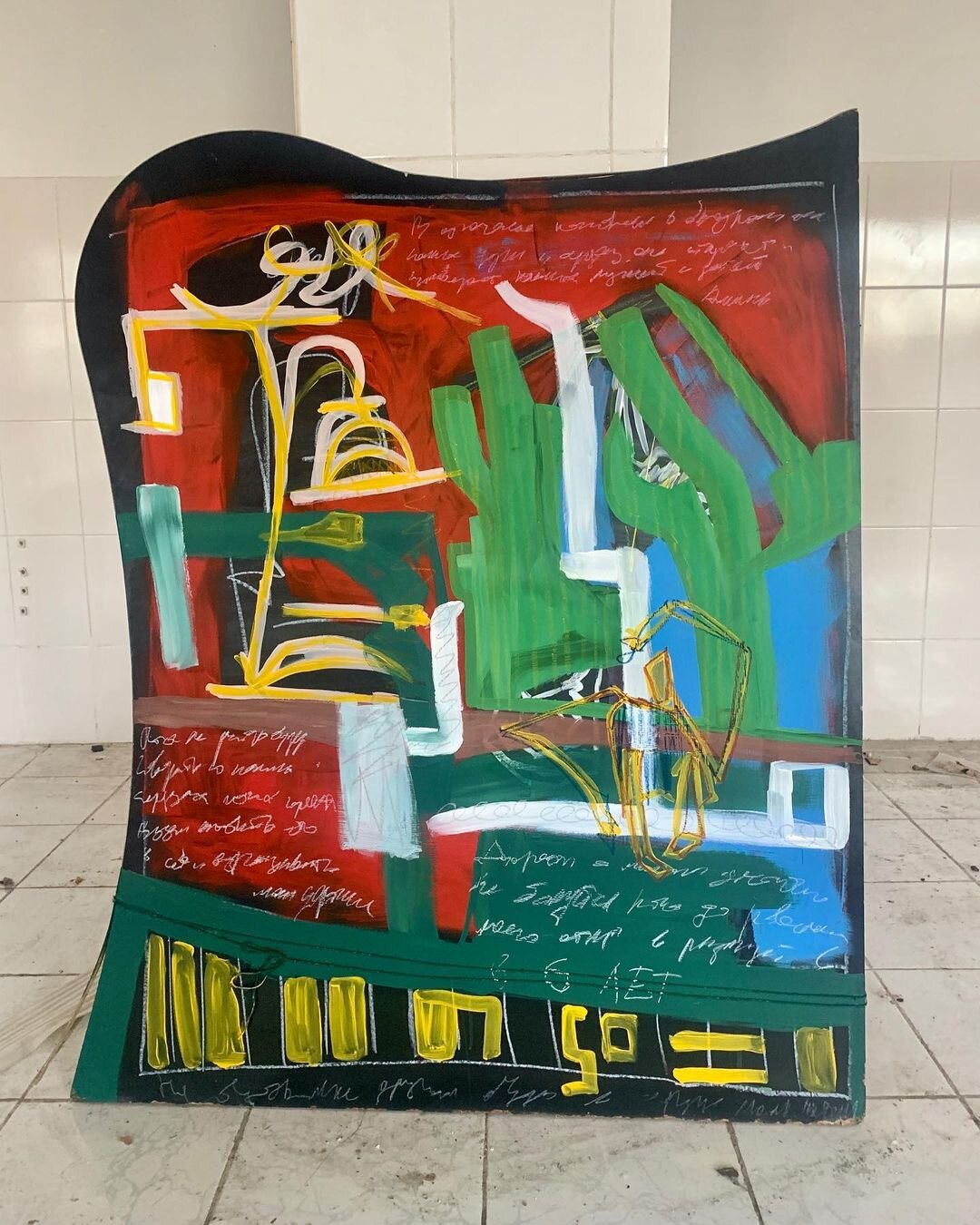



Aruzhan Zhumabek
Mutating bodies and anthropomorphic objects in Aruzhan Zhumabek’s monochrome graphic works are depicted with soot and a black gel pen. The artist's works unfold the topic of trauma, personal and collective, but also always leave open space for interpretation. Amputated limbs, blood, and surgical instruments, combined with symbols from Kazakh culture, a long braid, a bowl, and vulnerable portraits of crippled characters. In the front of Aruzhan’s art is the inner reflection of fragmented identity, a metaphor for absence and phantom pain, through which we can consider complex references to the famine of the 30s in Kazakhstan, the tragedy of the Semipalatinsk test site, and other historical traumas presenting local culture and its issues as a traumatized body. Aruzhan views the artistic practice as psychoanalysis, where an important position also remains as an irrational approach to the creation of works.
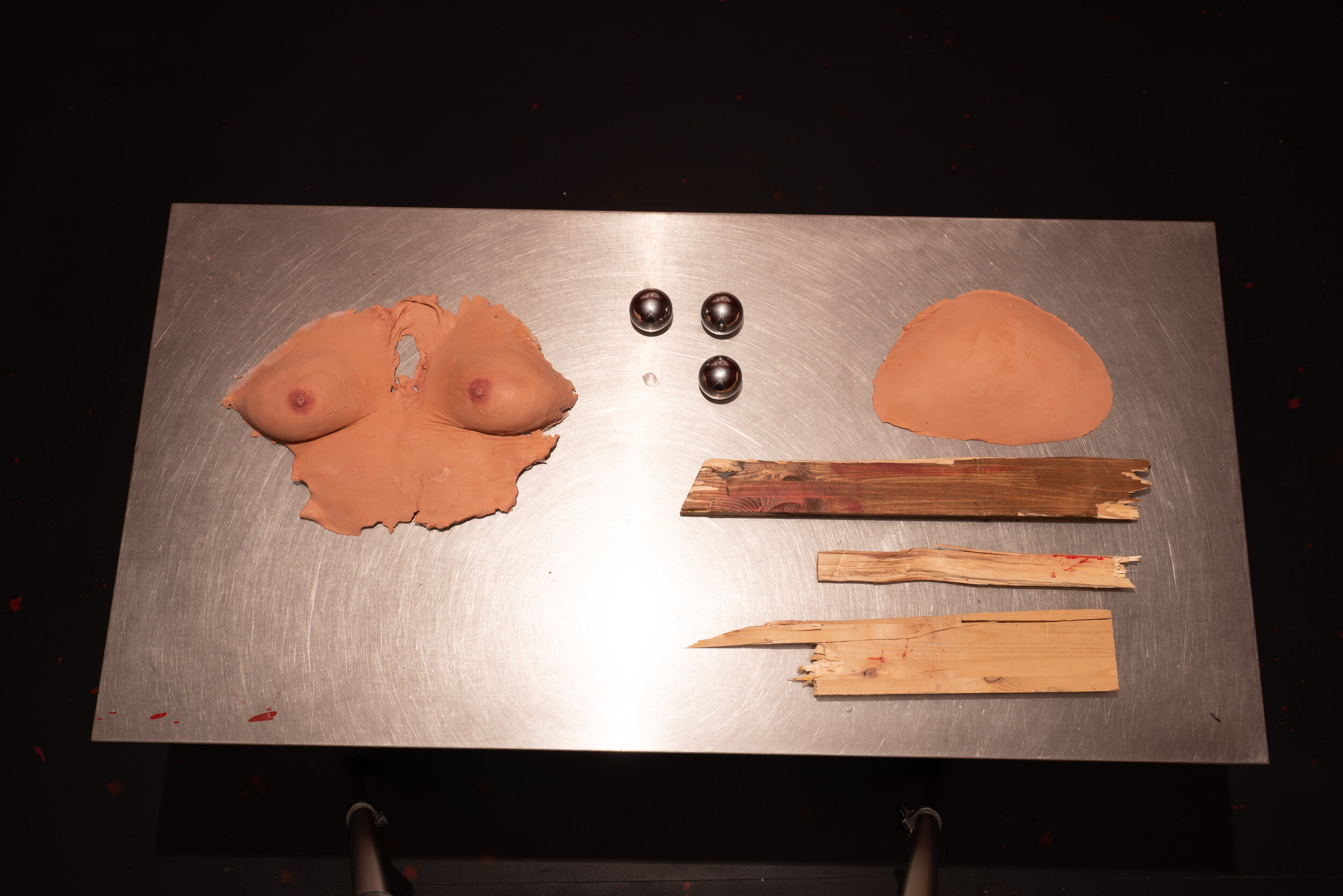
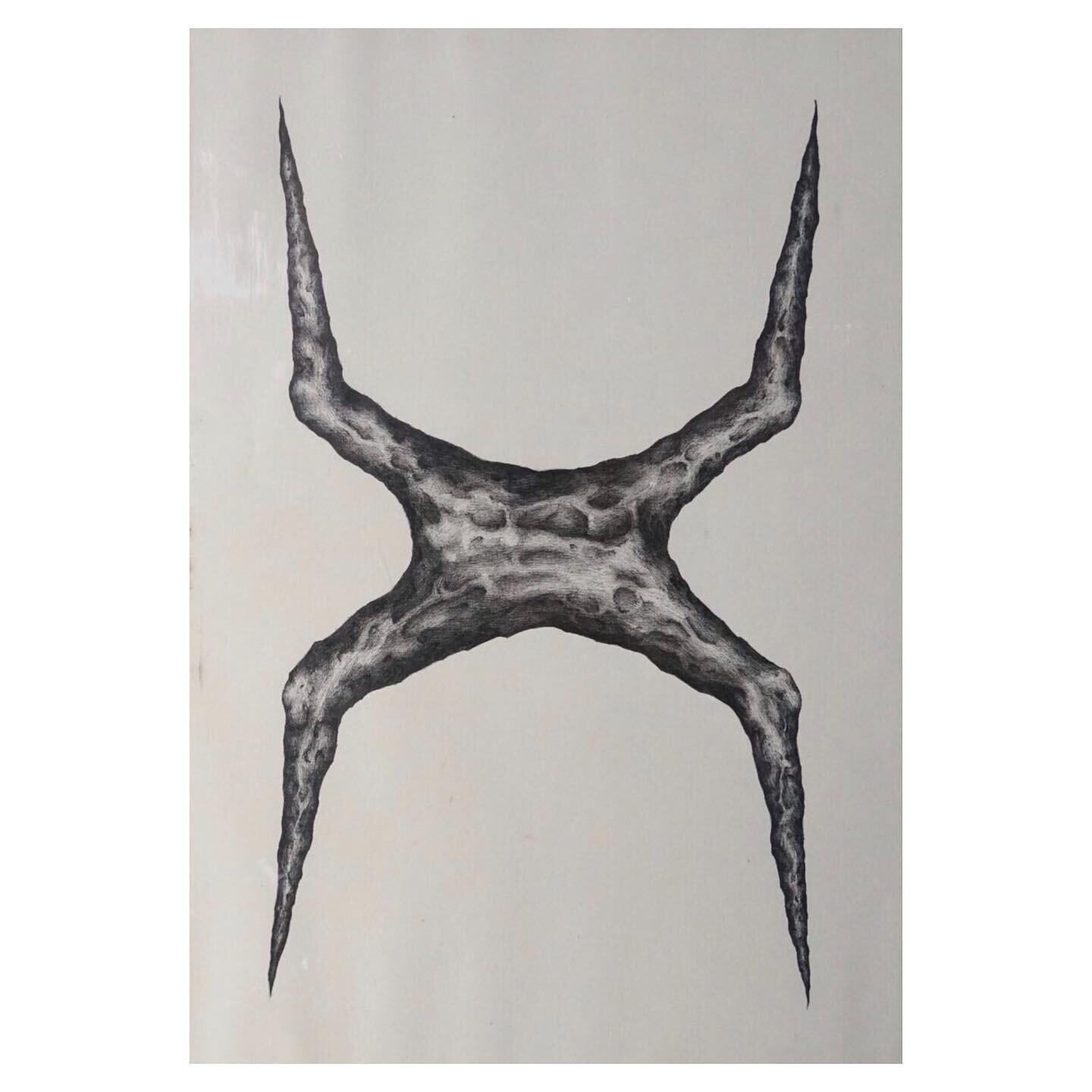
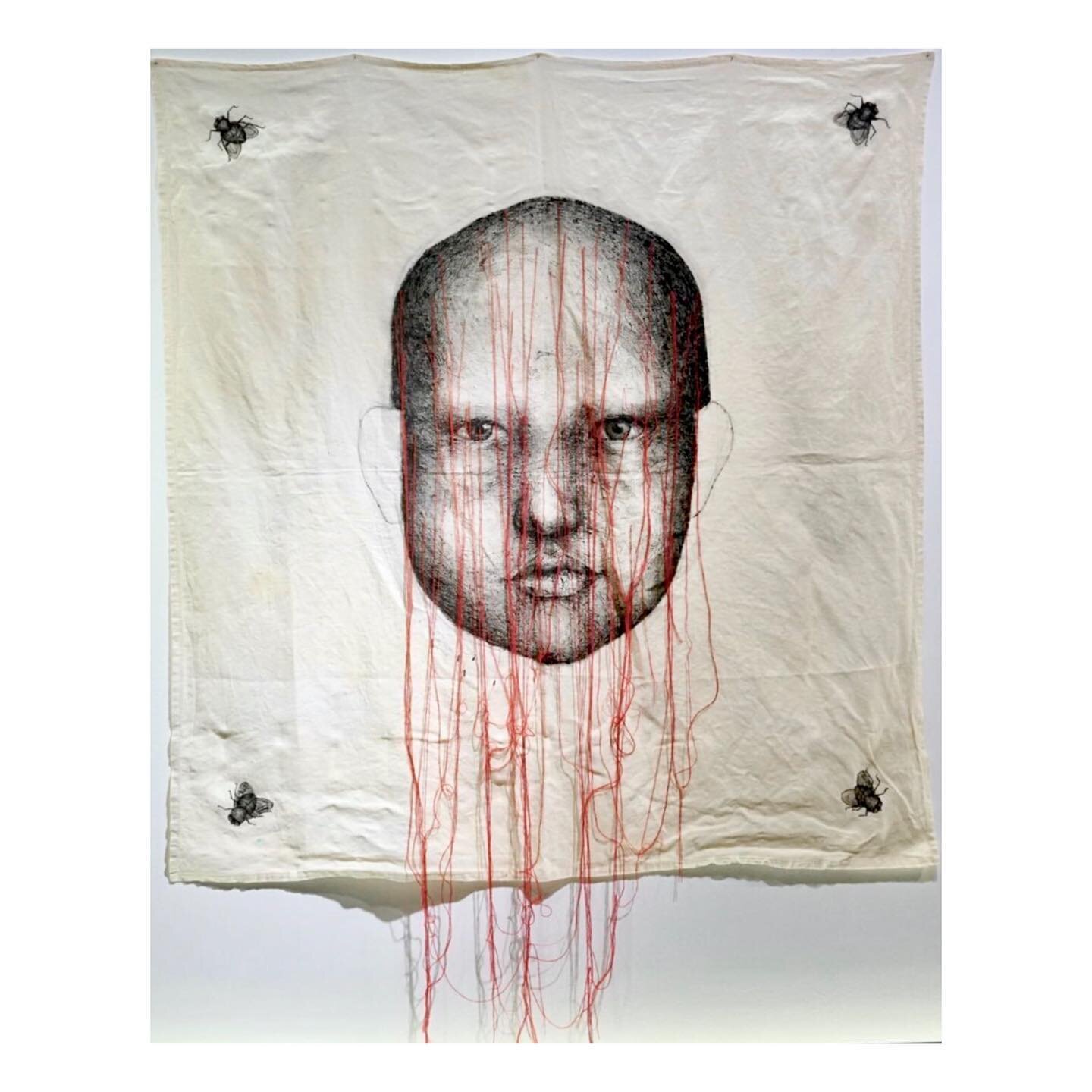
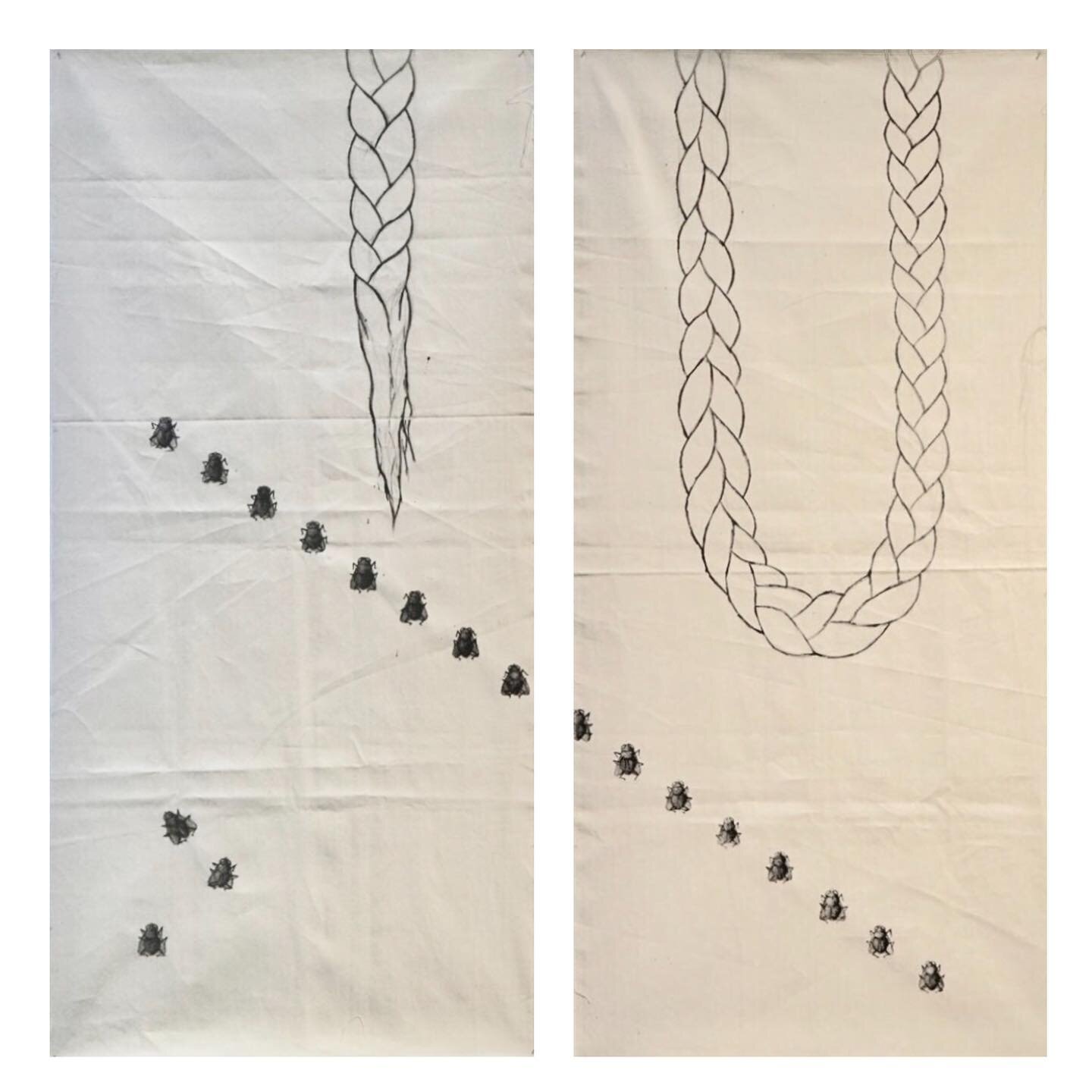
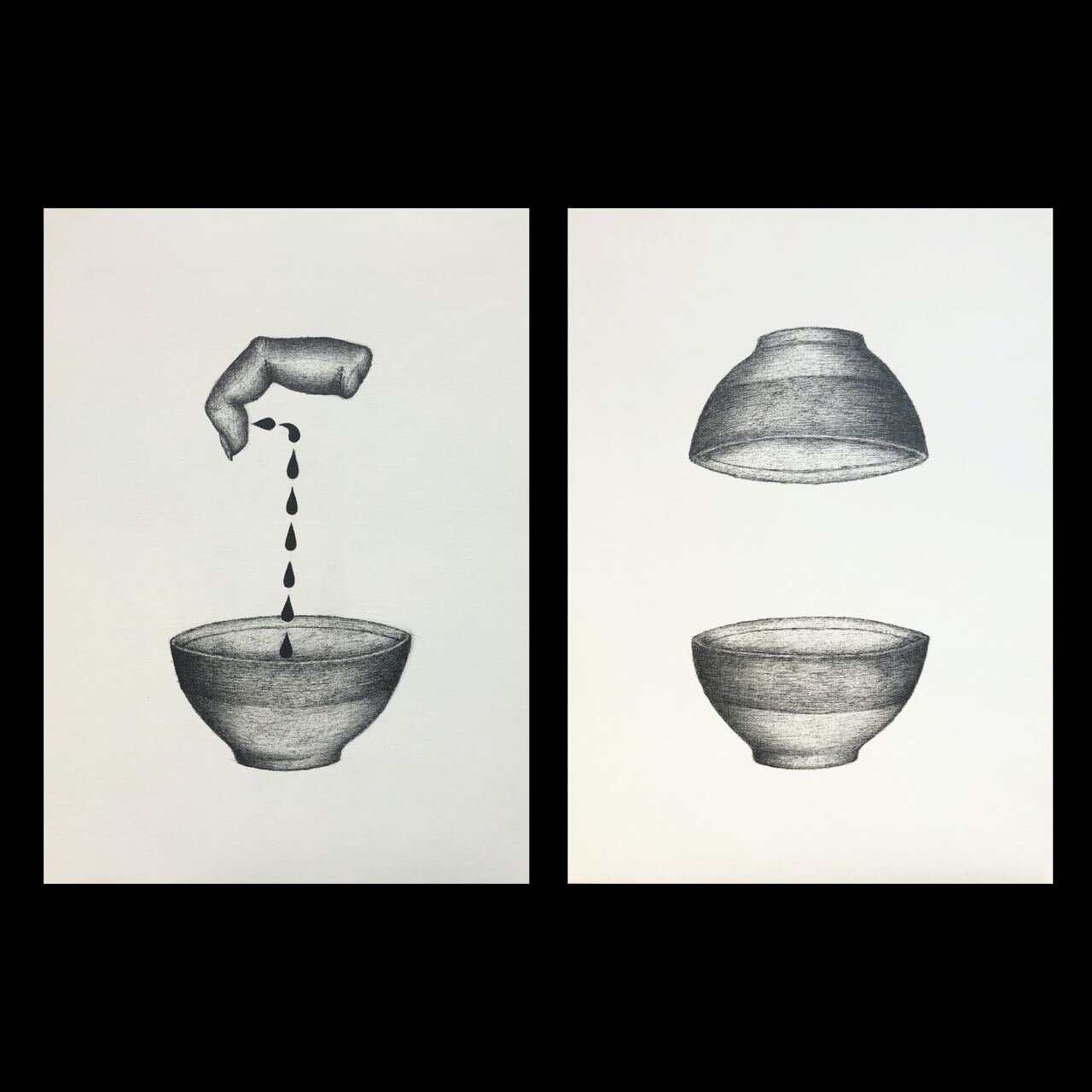
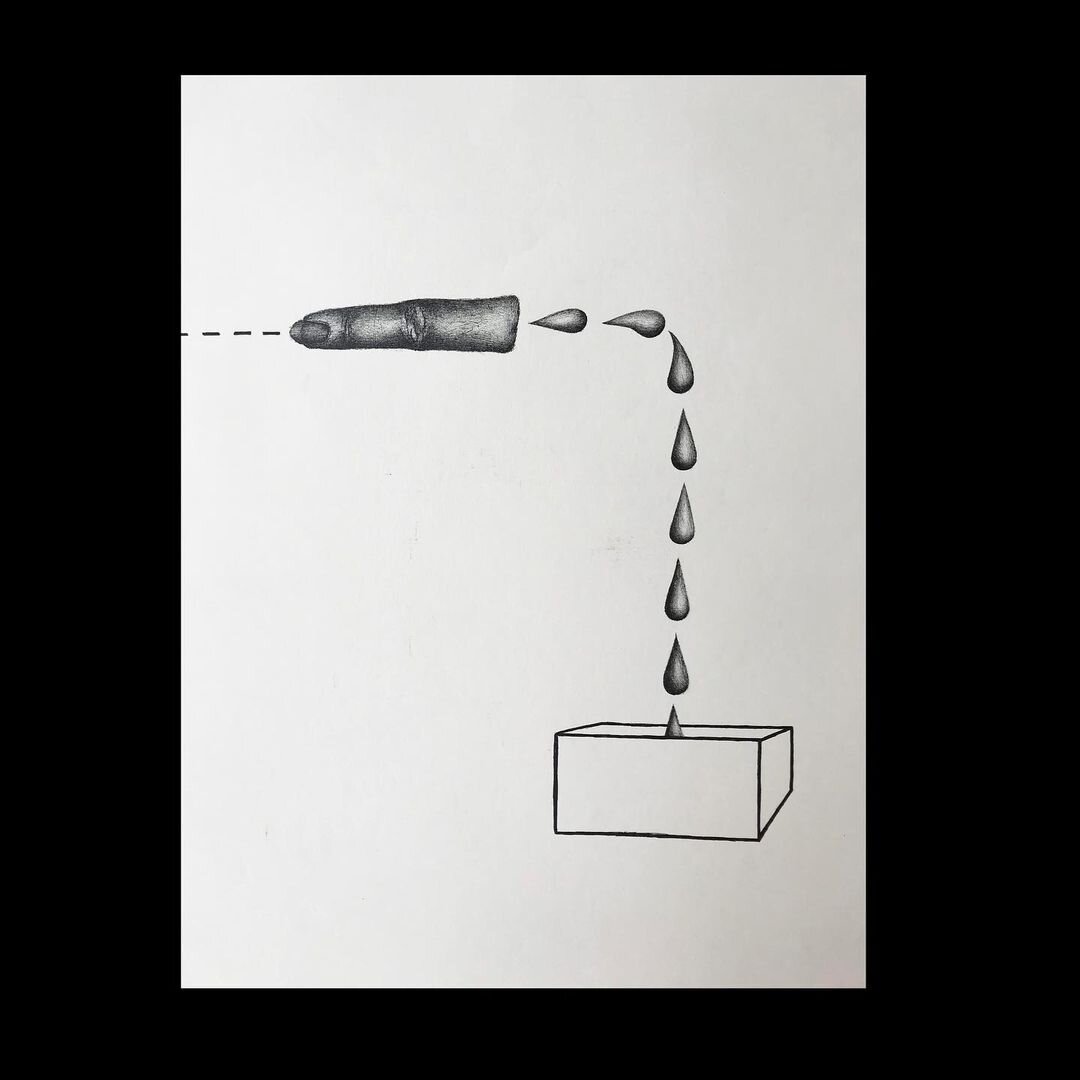
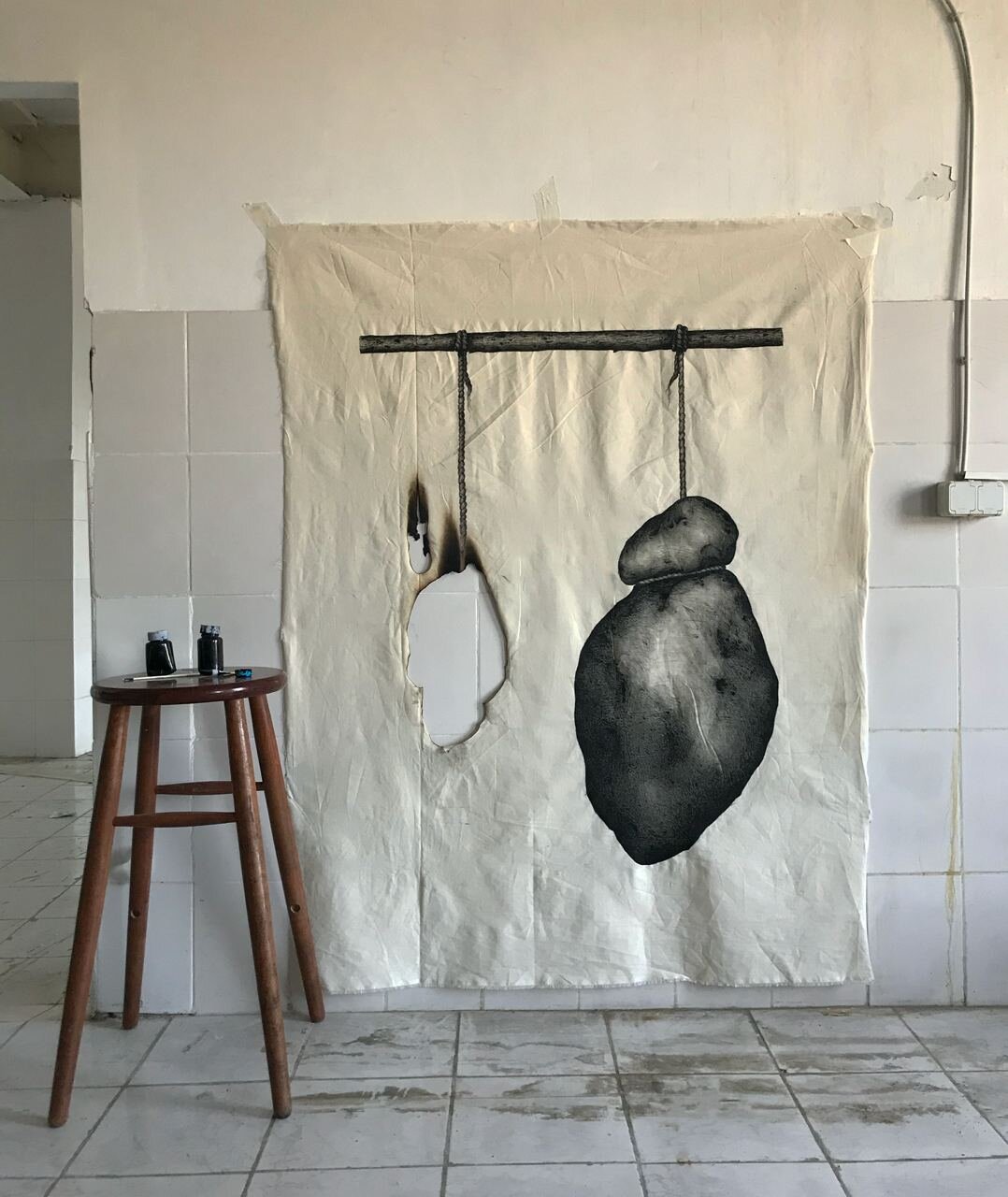
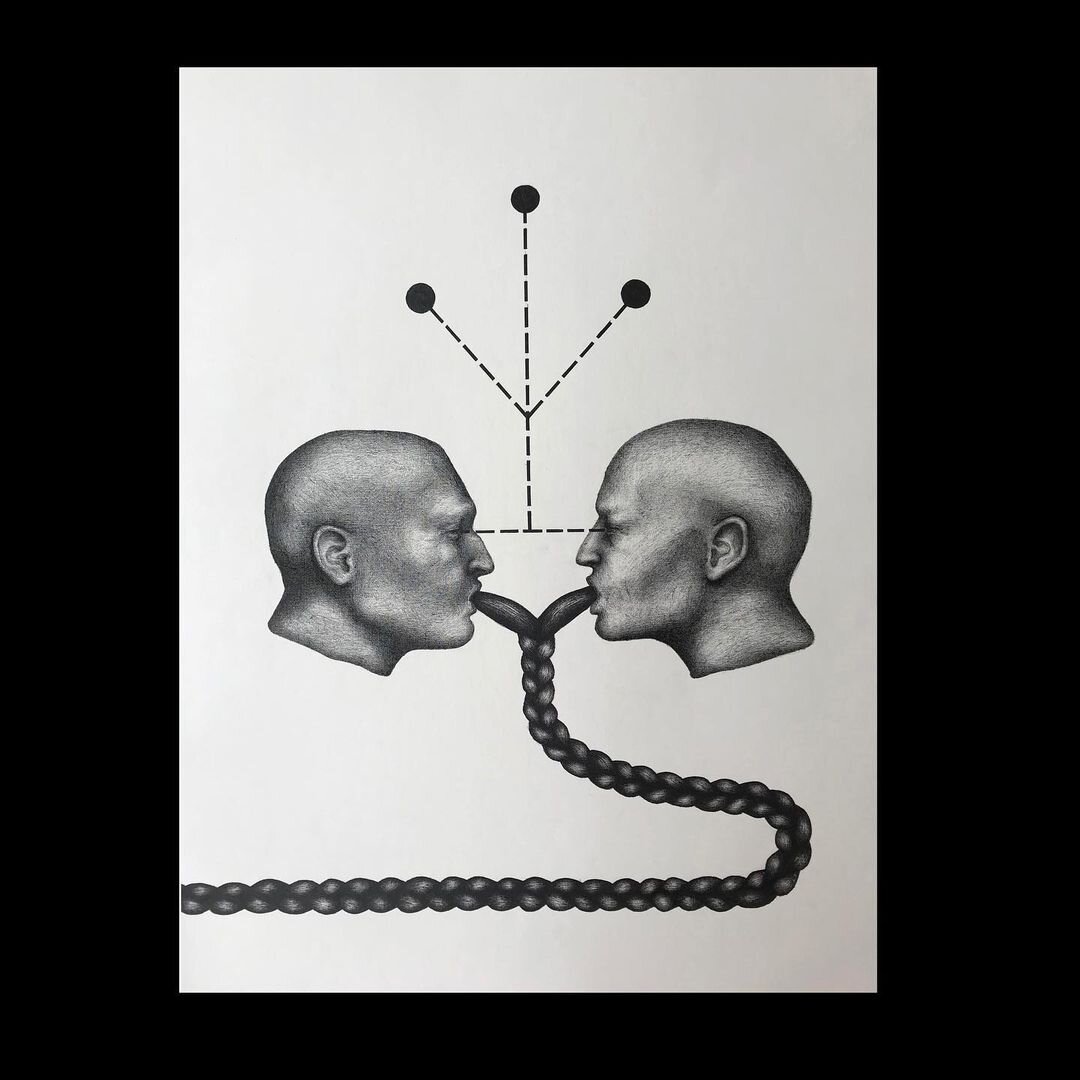
Violetta Bogdanova
Violetta works in mixed media, combining painting and graphics. Her minimalist paintings fill the canvas space with emptiness, supported by ephemeral images. Air and the breathing metaphor, according to the artist, free the viewer from the information noise as the main state of modern times. Violetta is from Petropavlovsk, where she studied from the age of 8 academic drawings in art school, subsequently experiencing a crisis in the need to go beyond the boundaries of this experience. As a significant formation time, the artist calls 2020, when the period of self-isolation helped Violetta focus on developing her artistic practice. Violetta, like the aforementioned artists, also moves away from verbal approaches, returning to issues of aesthetics, and abandoning verbal articulation: “The concept is not an end in itself for me. I've tried working with a concept as the frame of the work - there is a clear idea and only then its embodiment. But this process did not give me inner satisfaction and something new. I would like the head, the spirit, and the chance to work together ... "
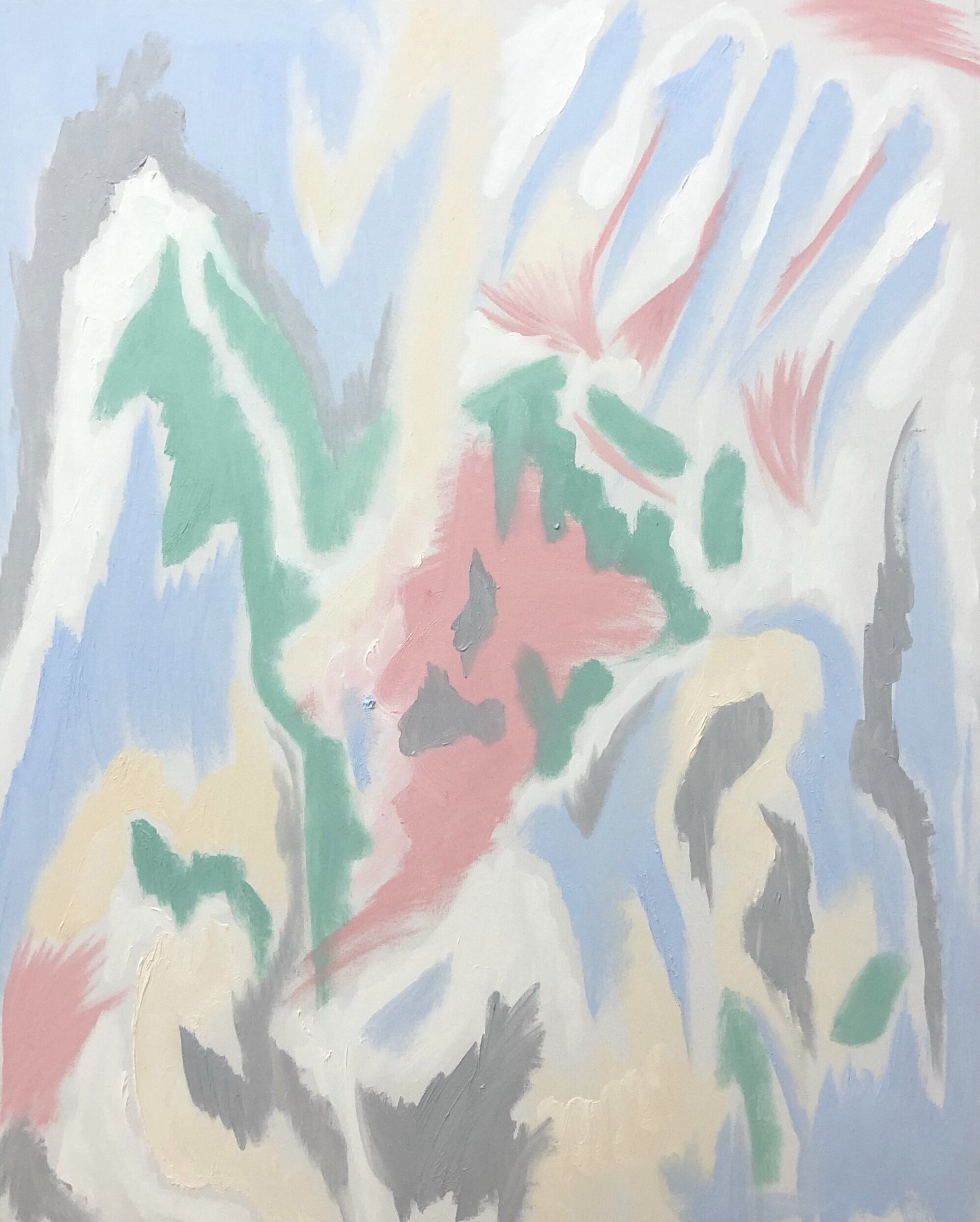

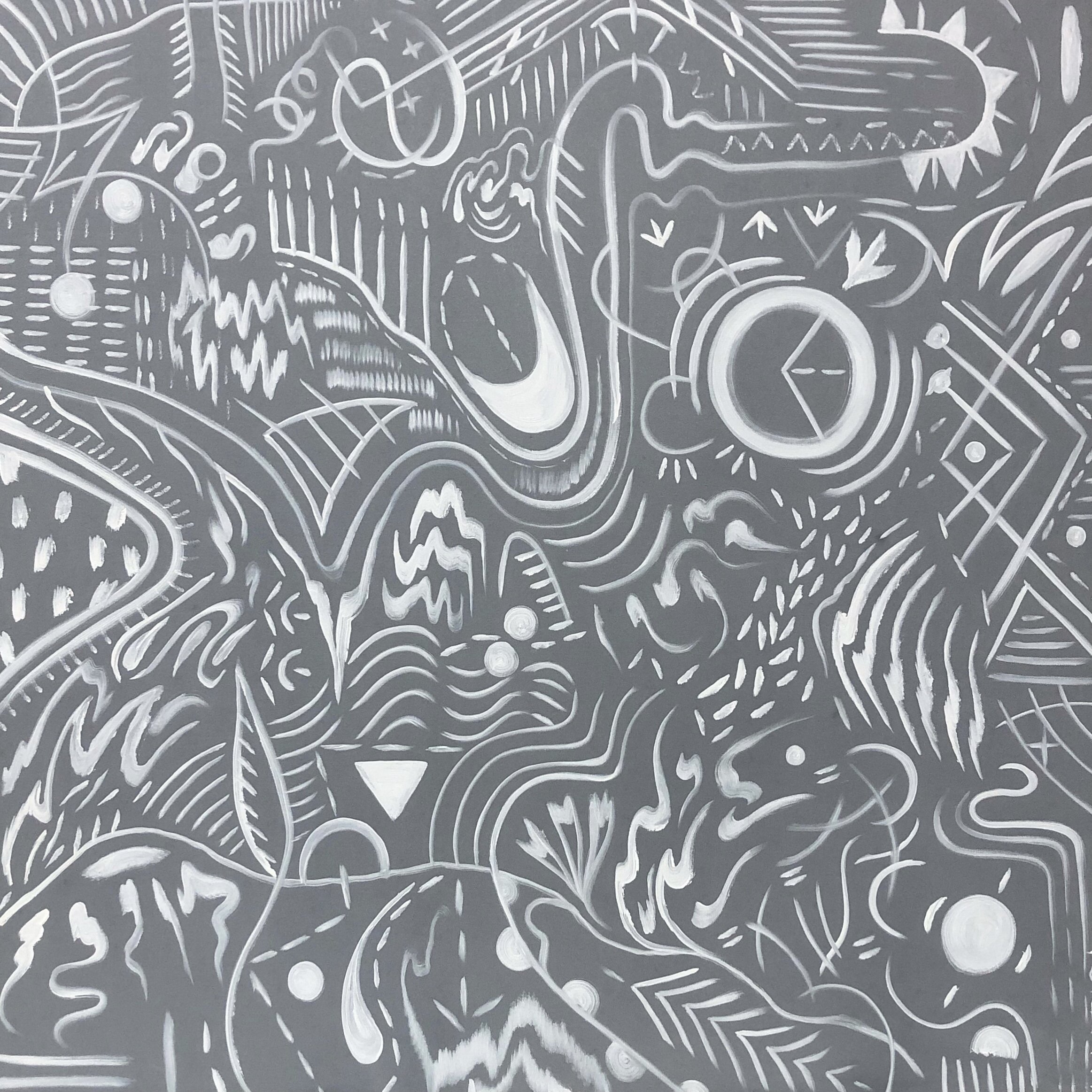
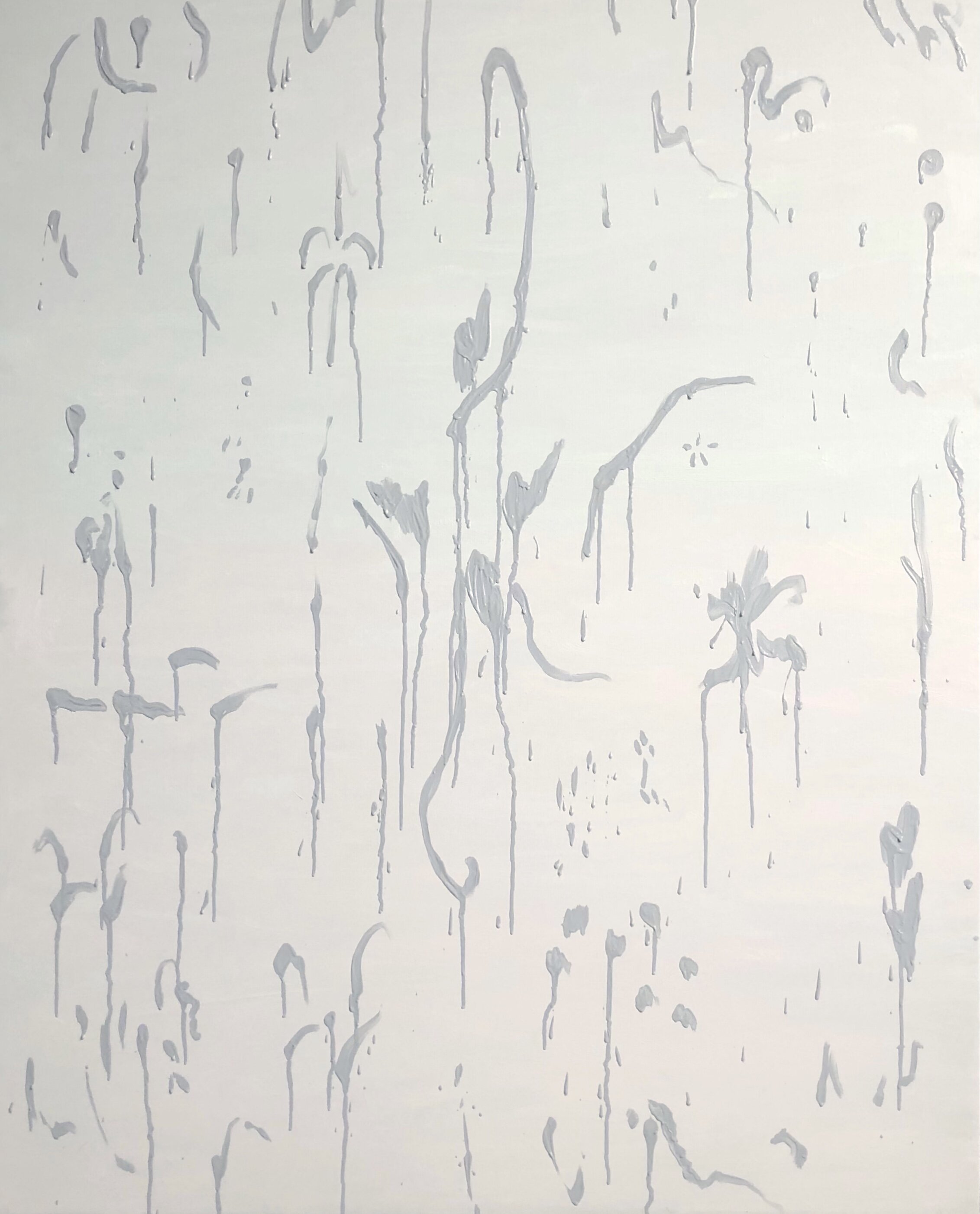
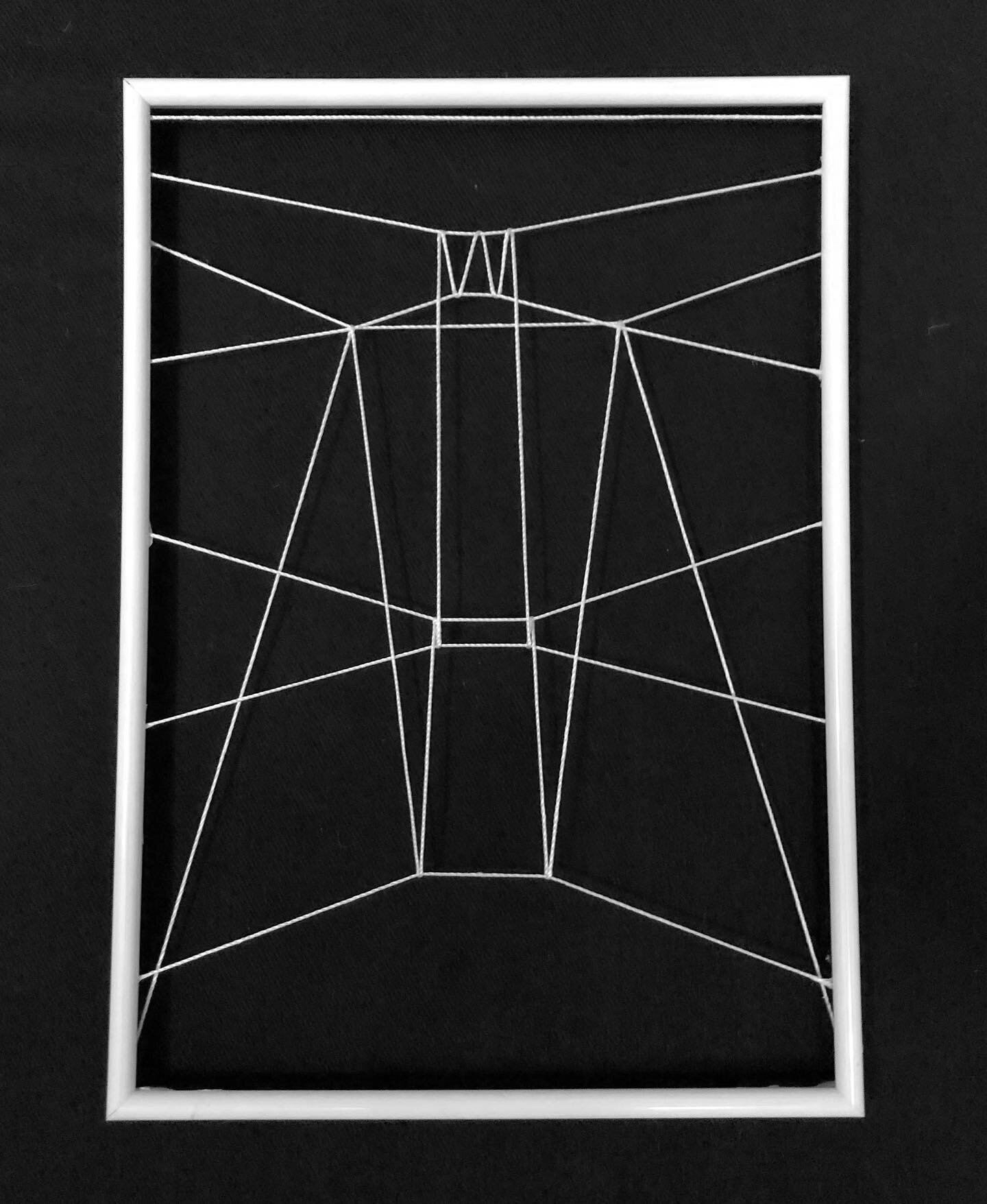
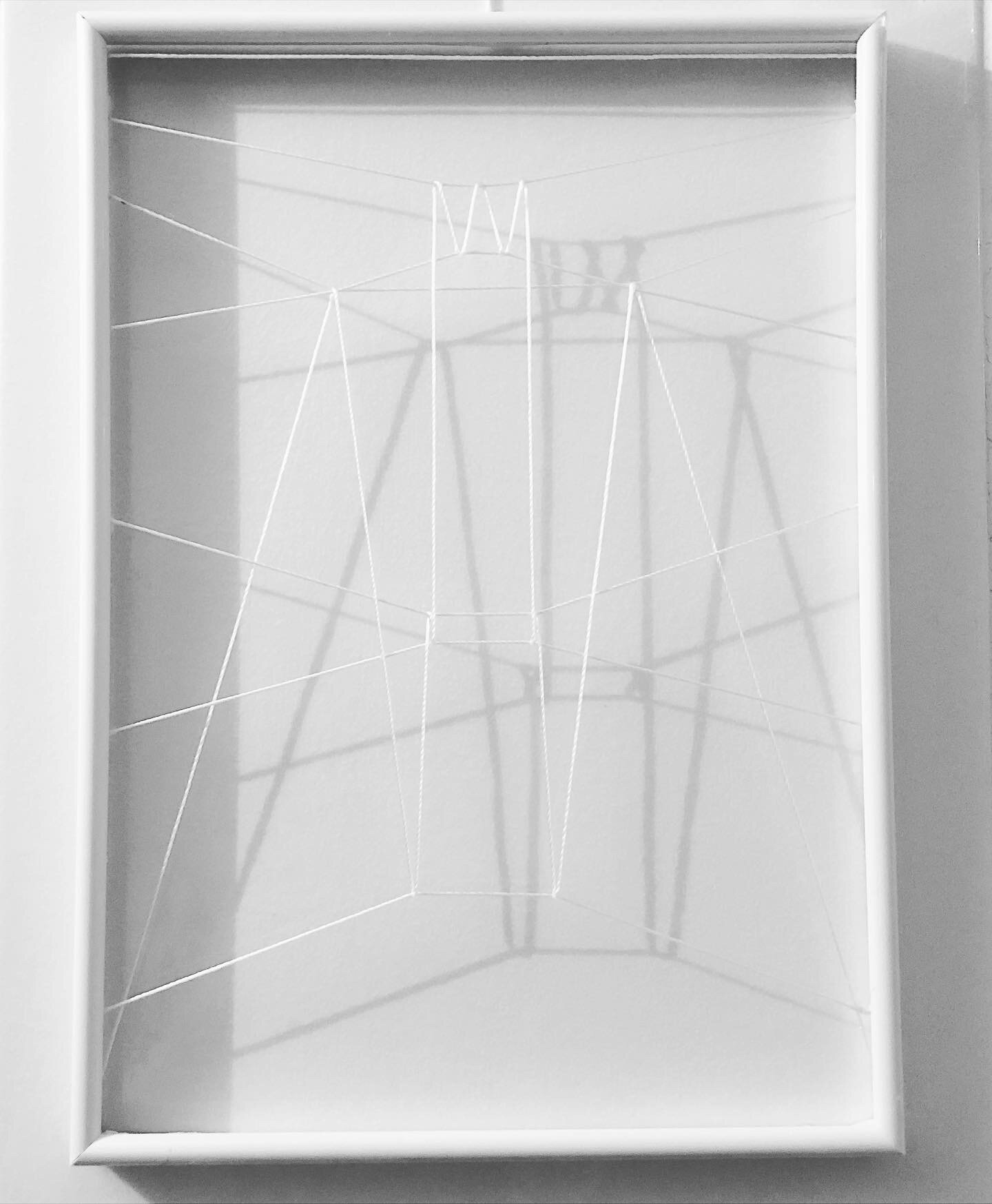

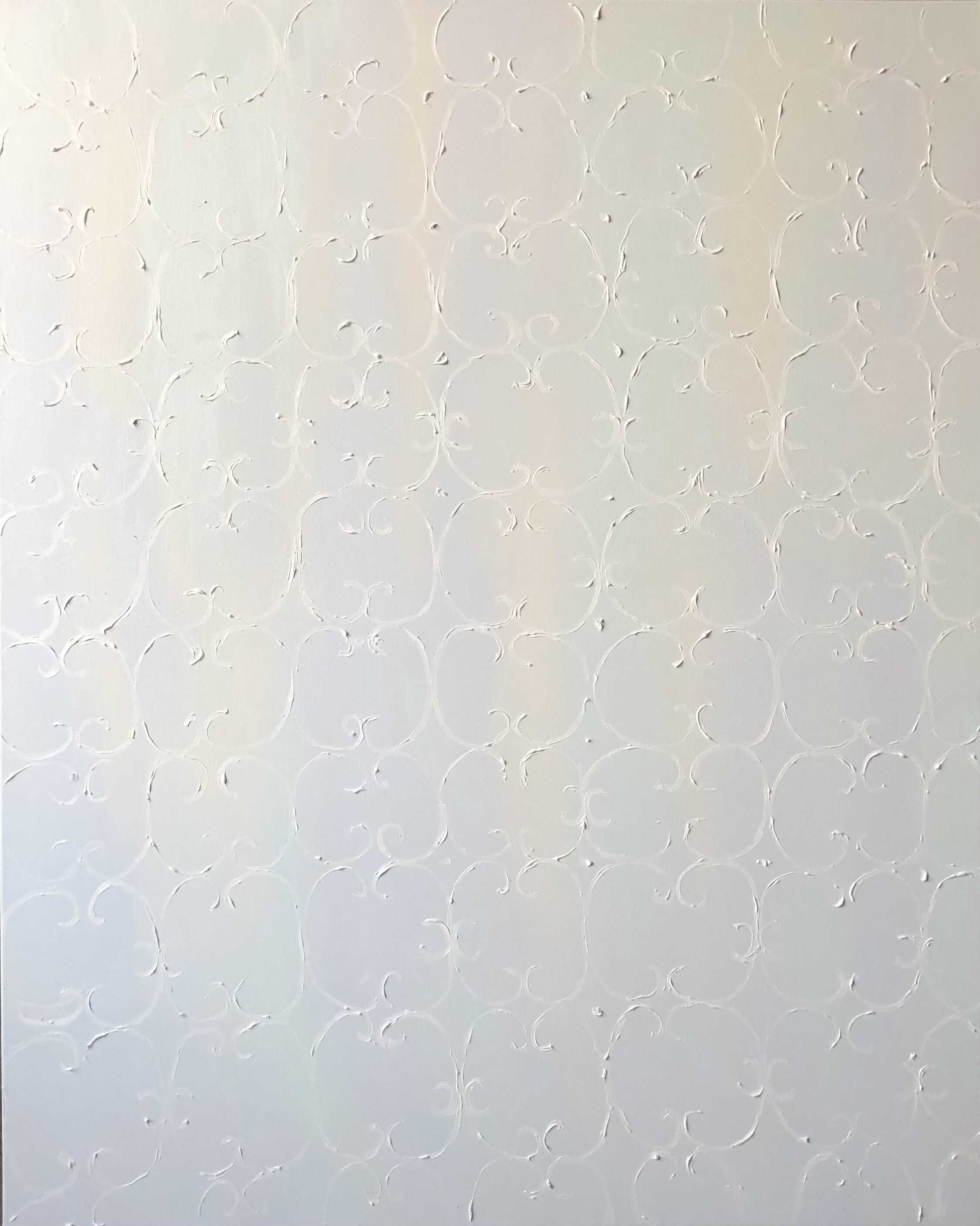

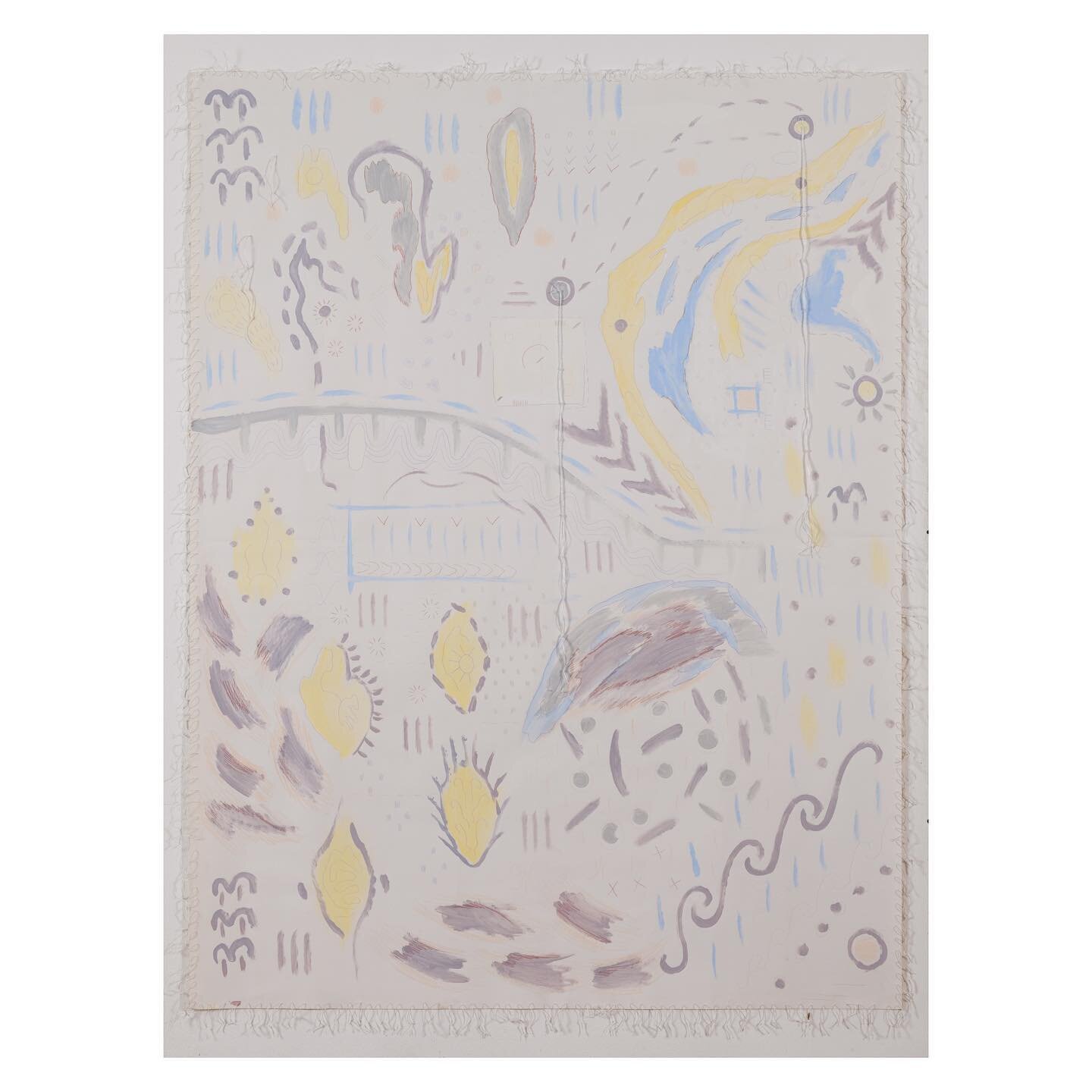
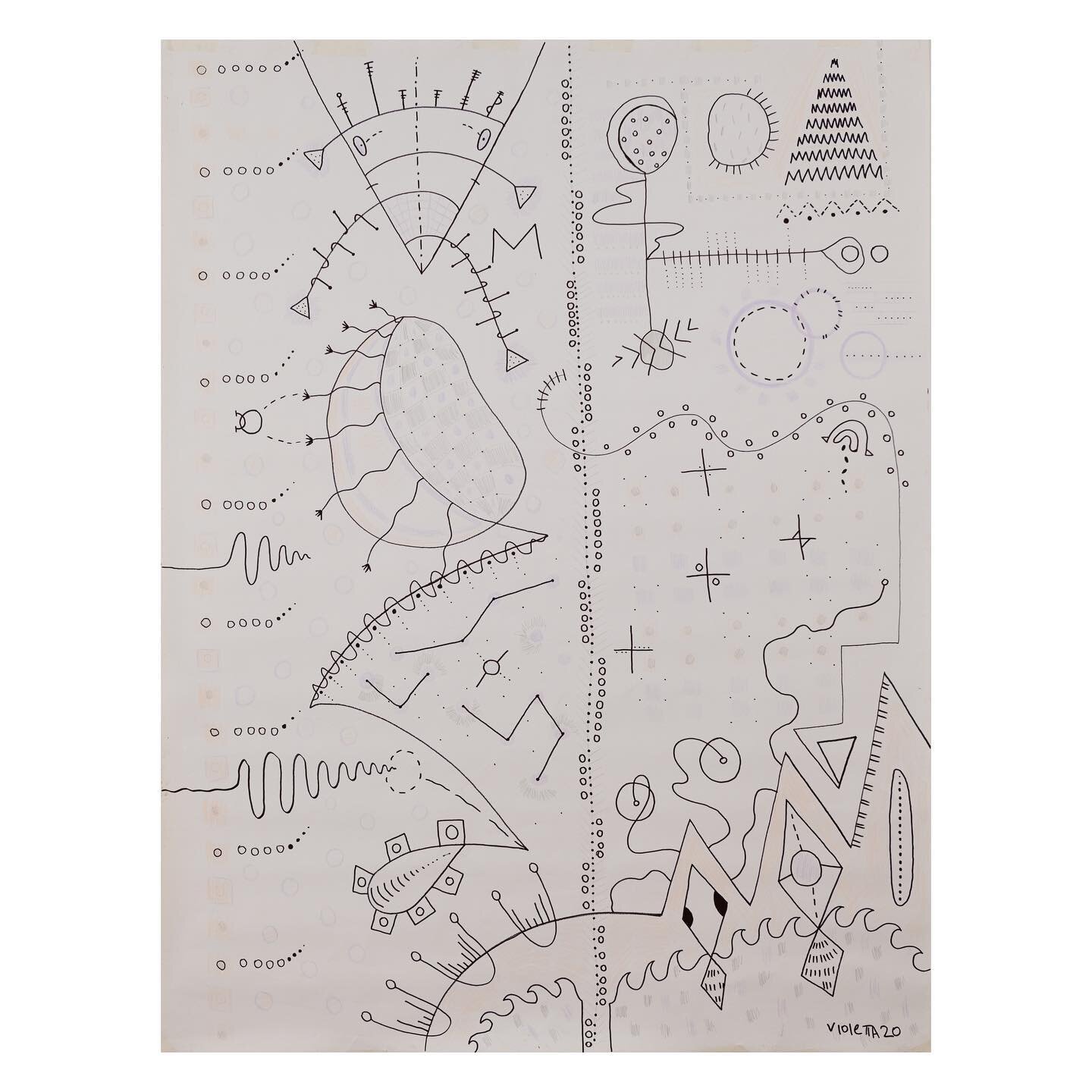
Text by Anvar Musrepov
